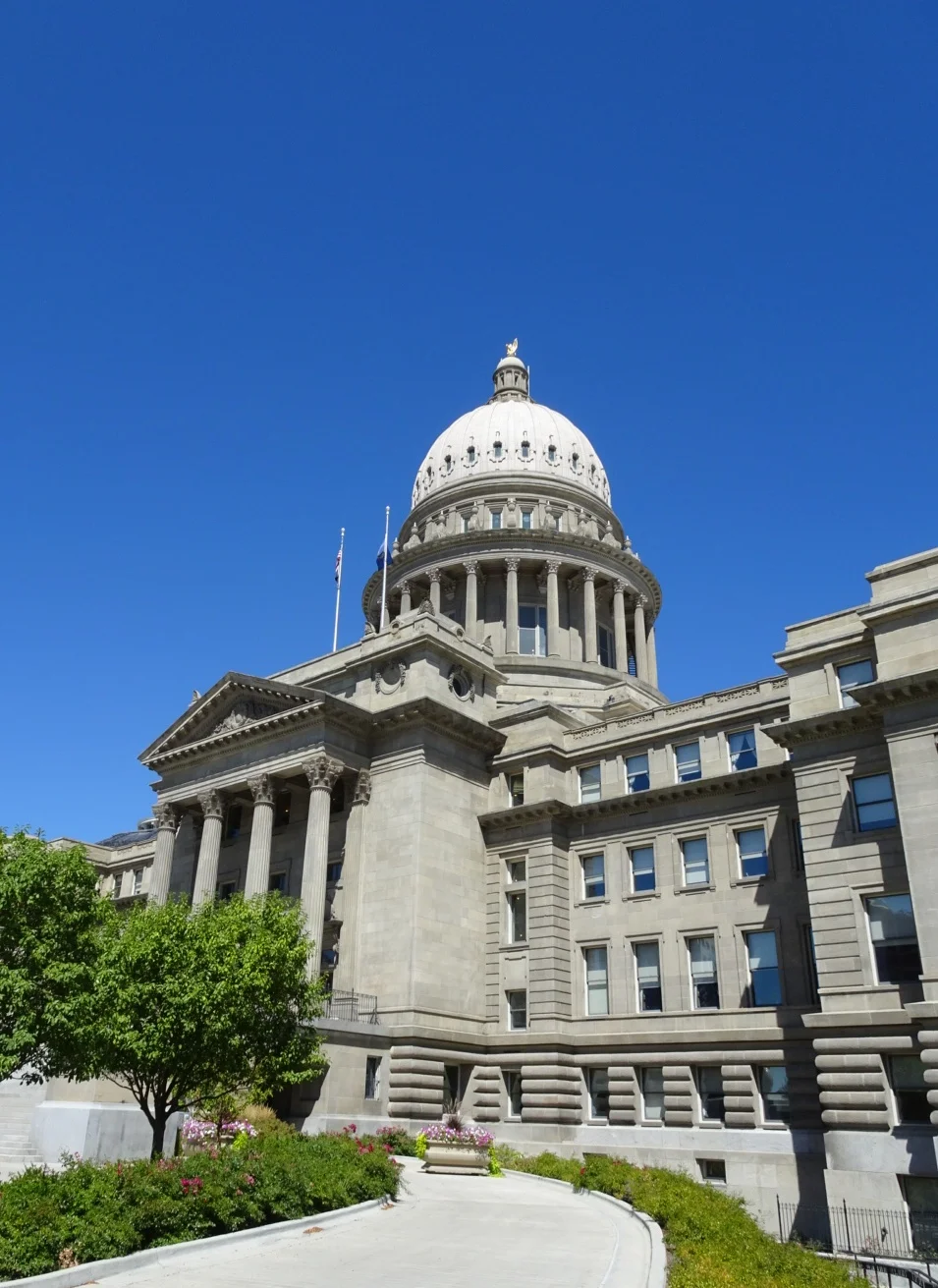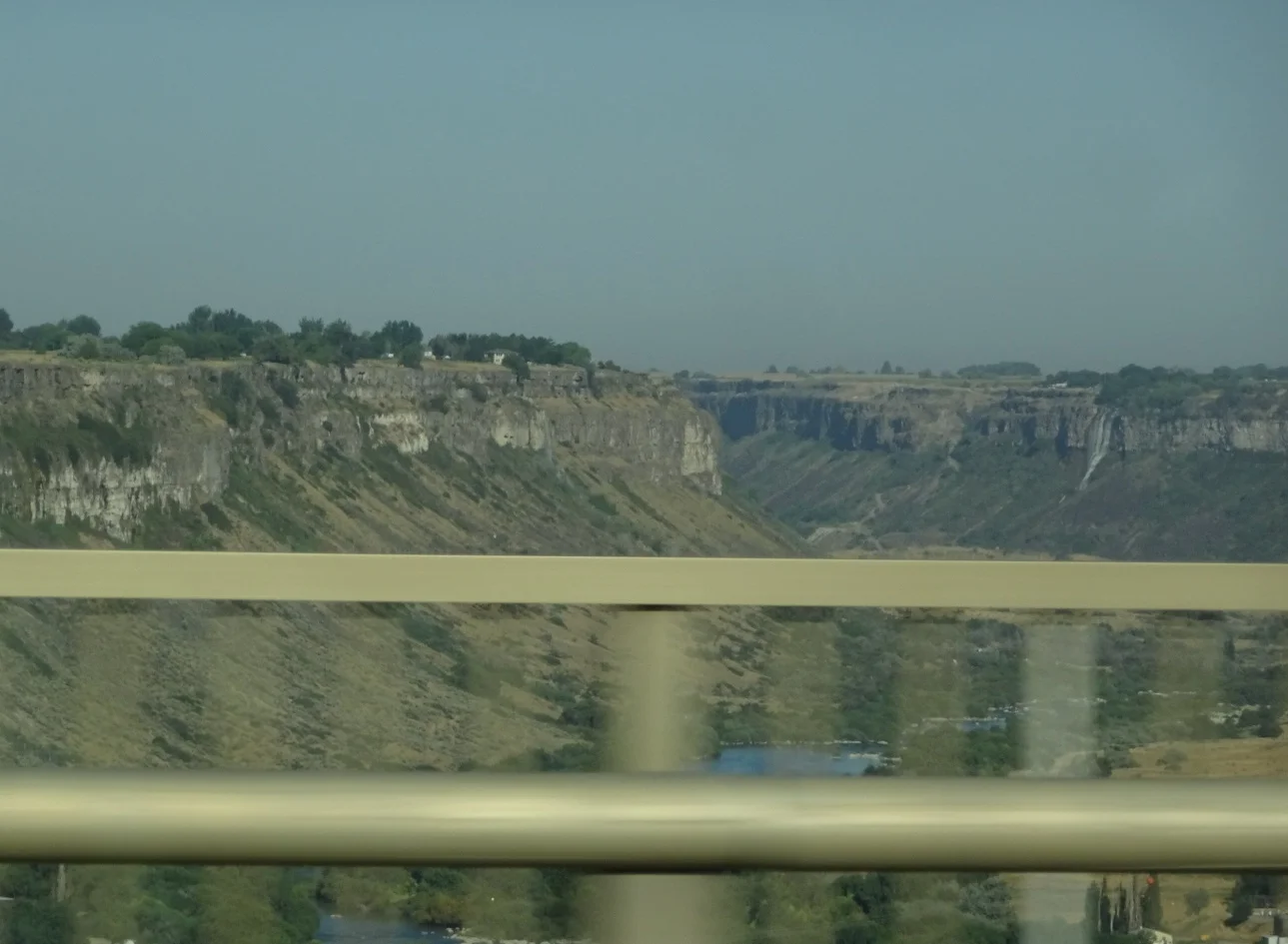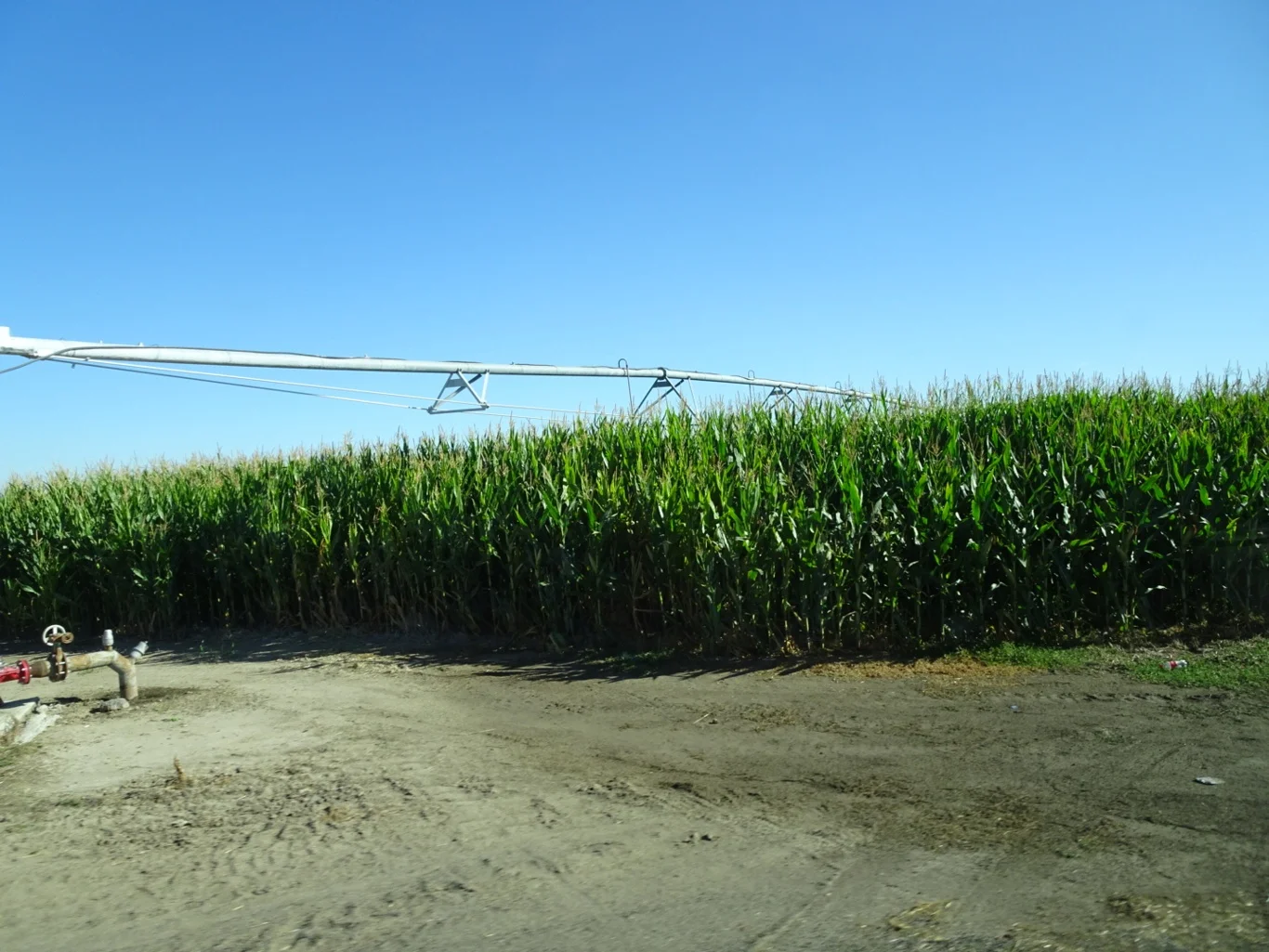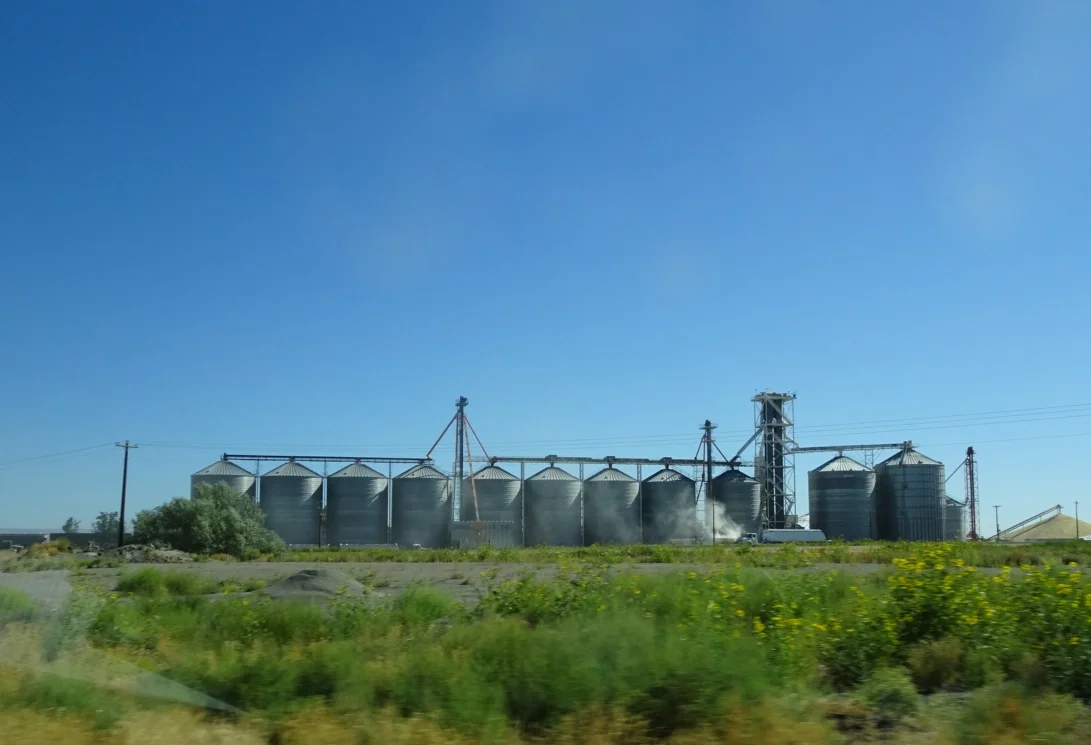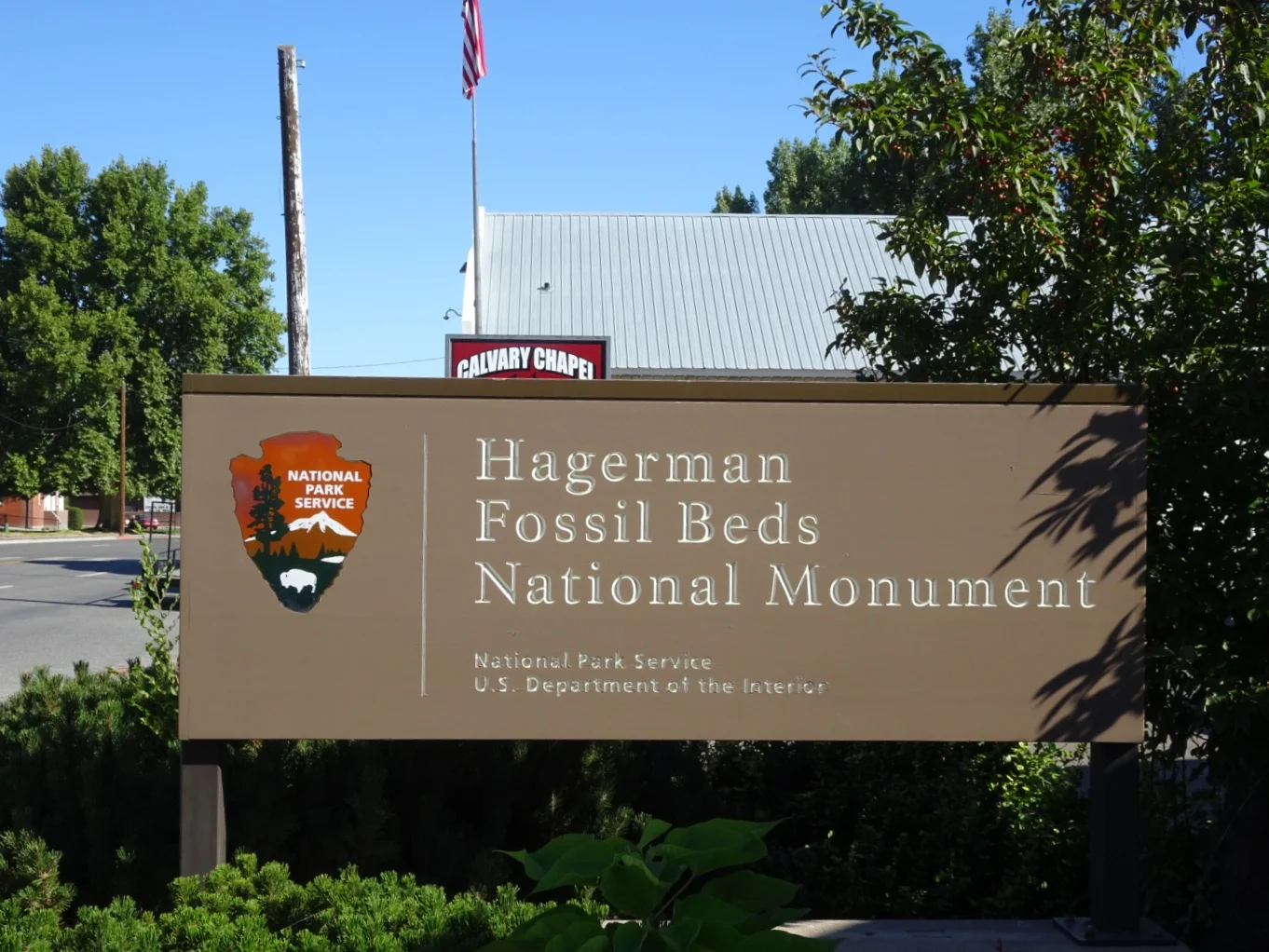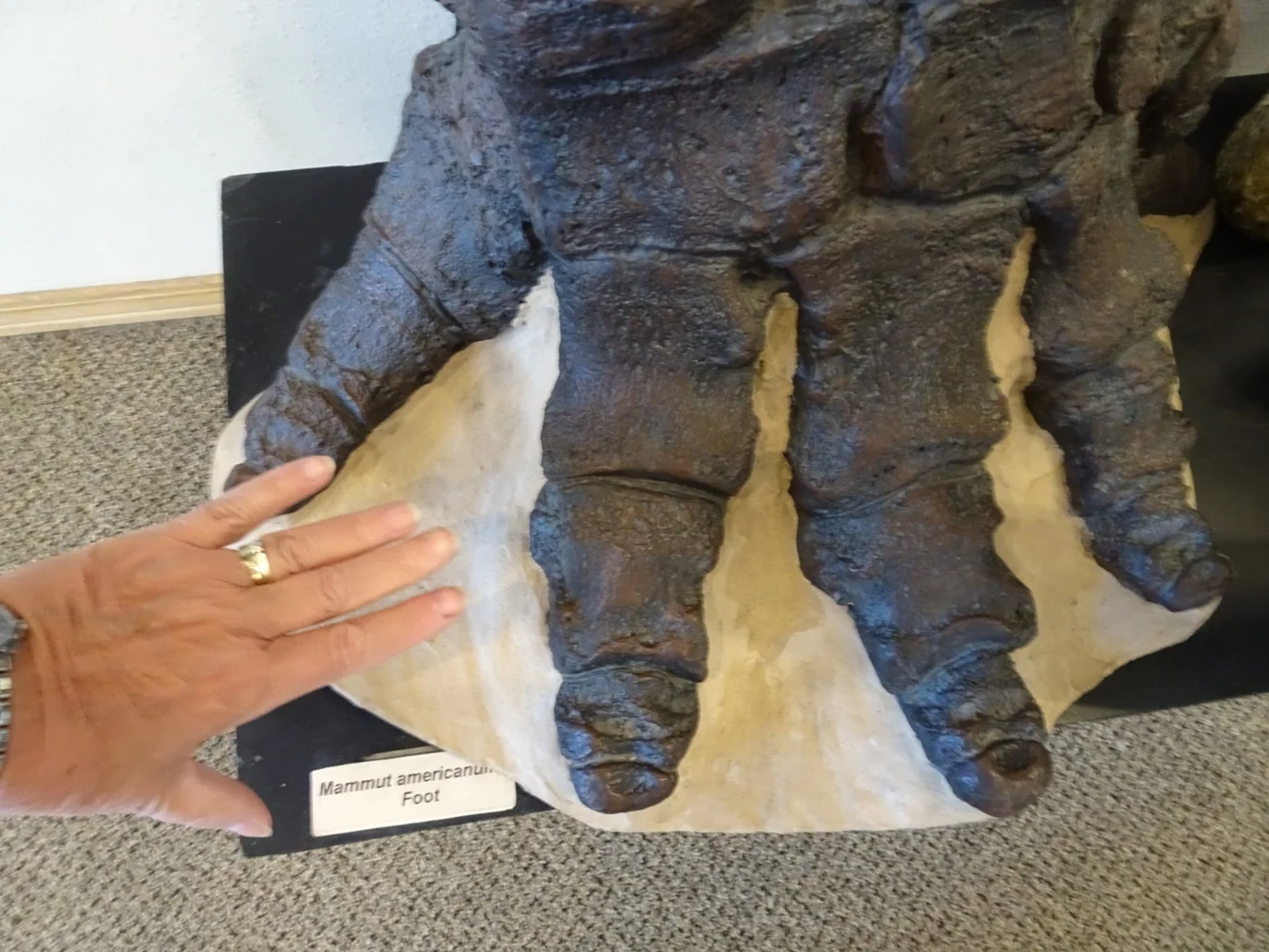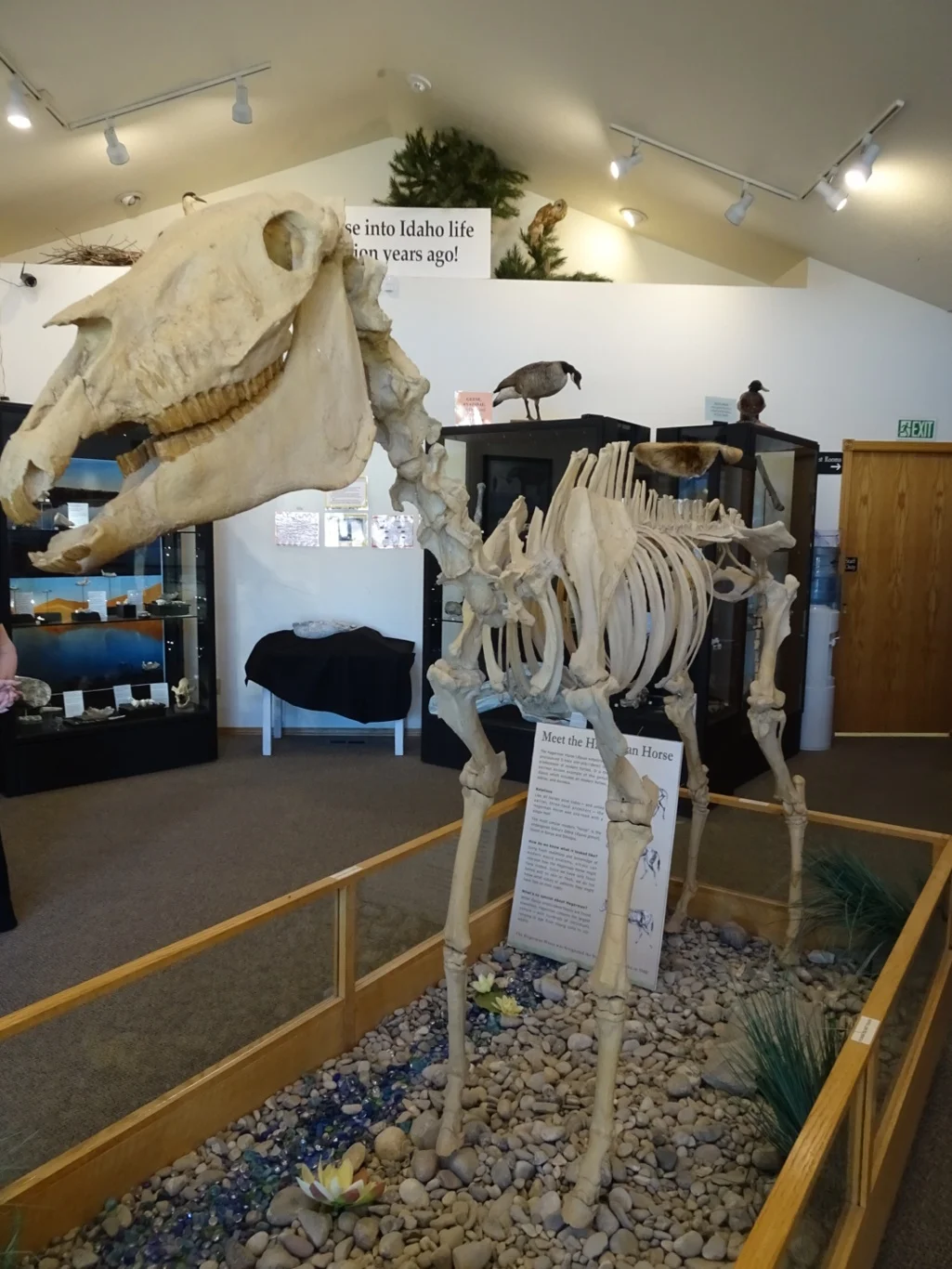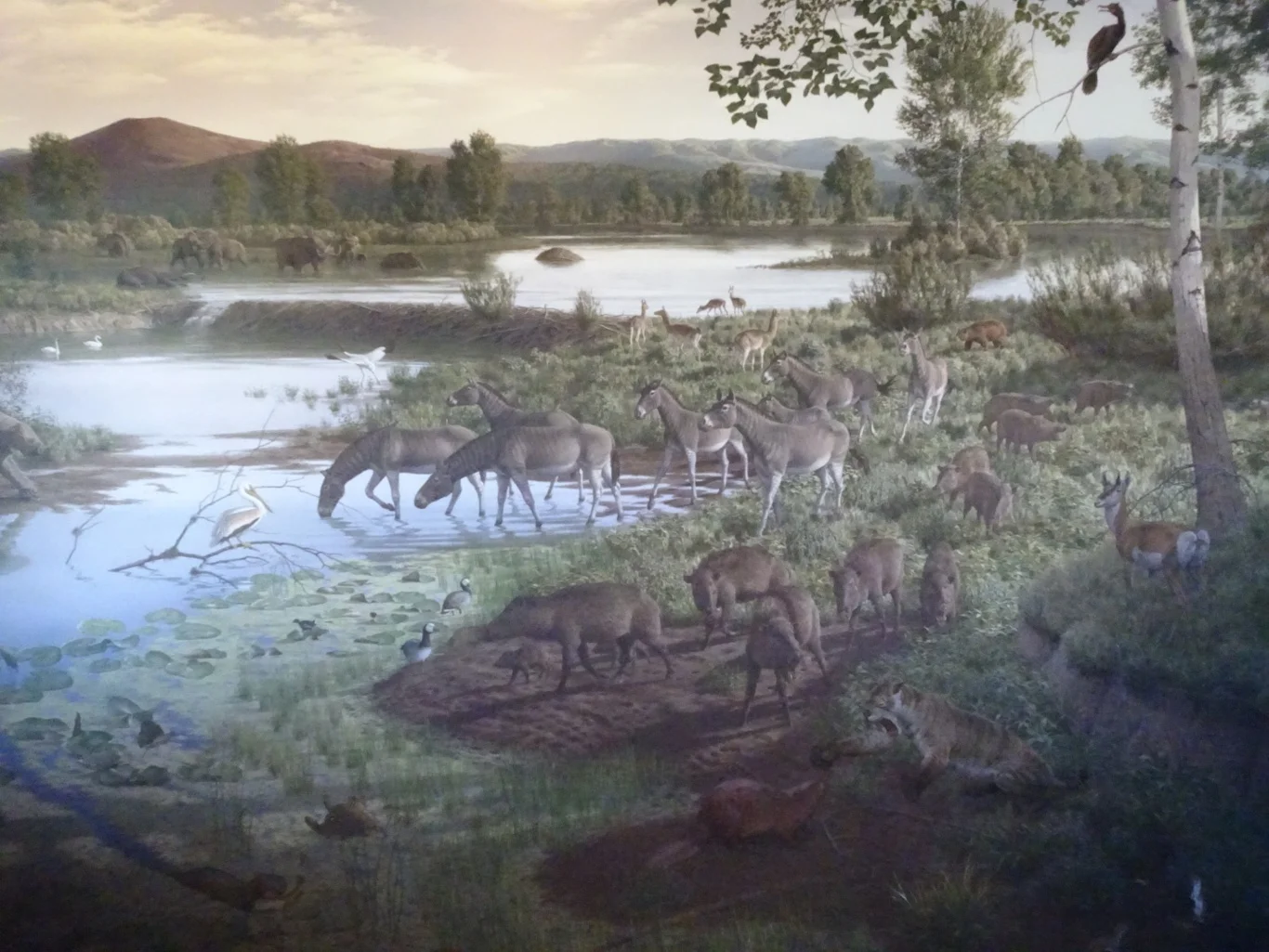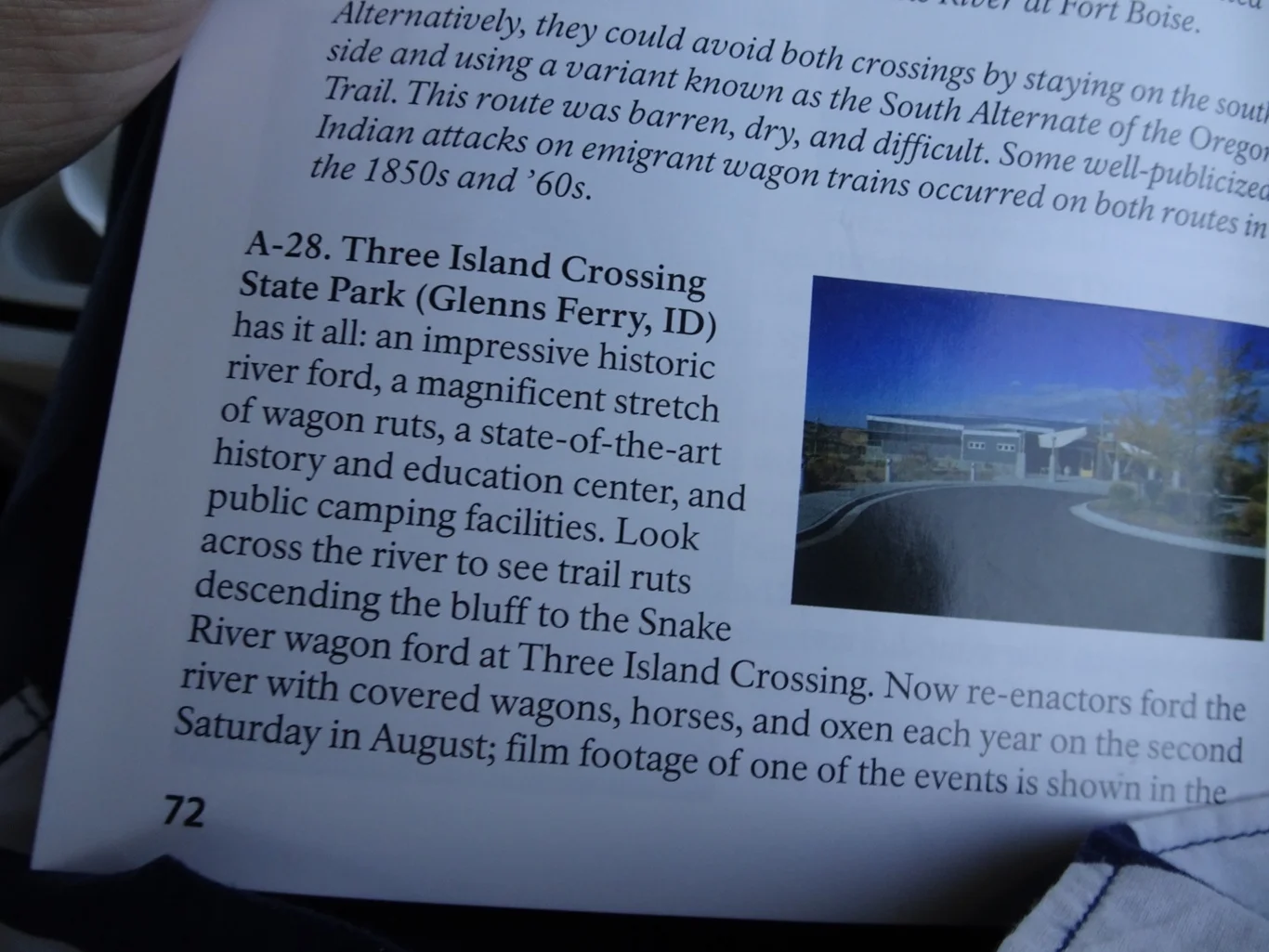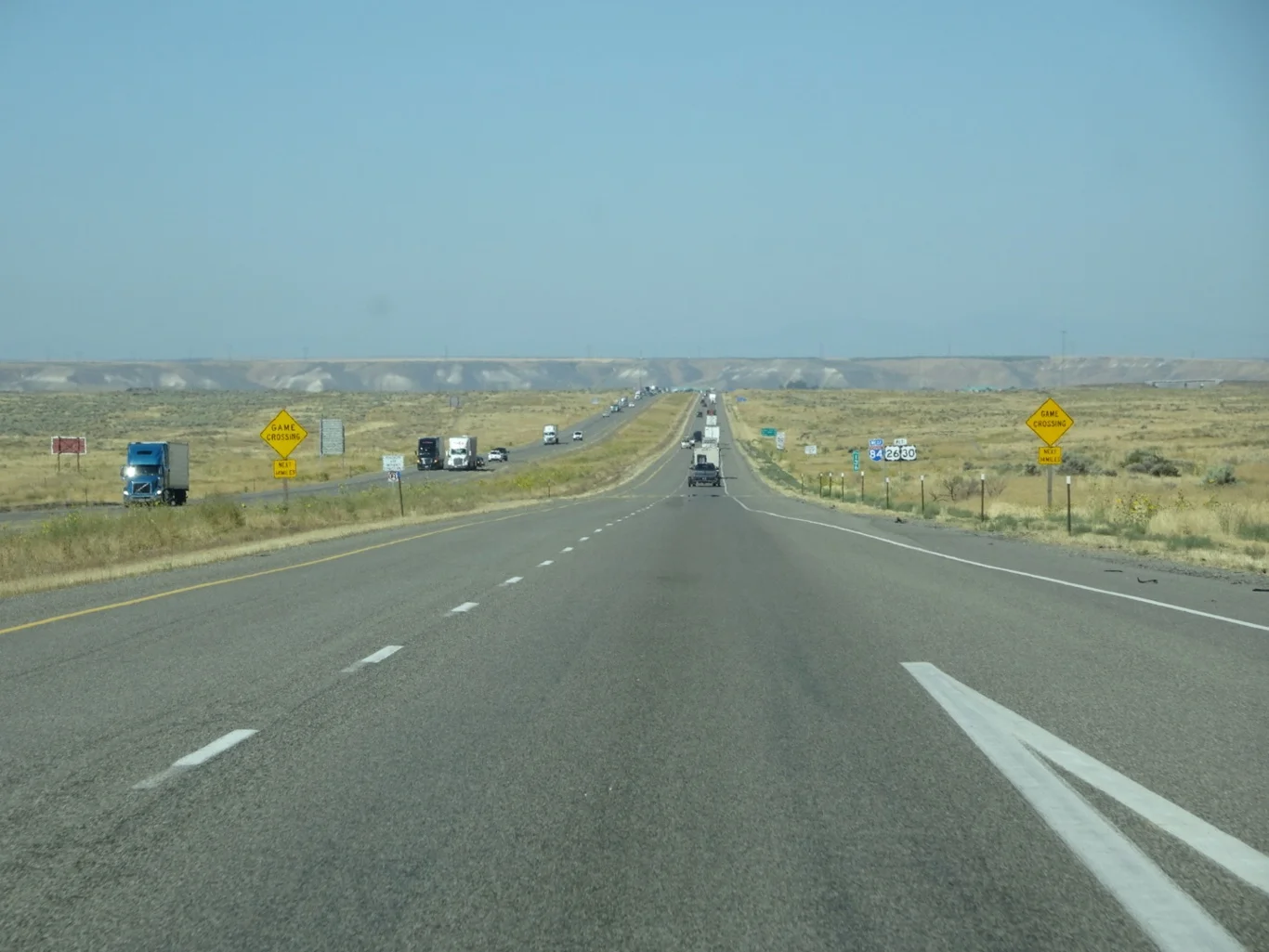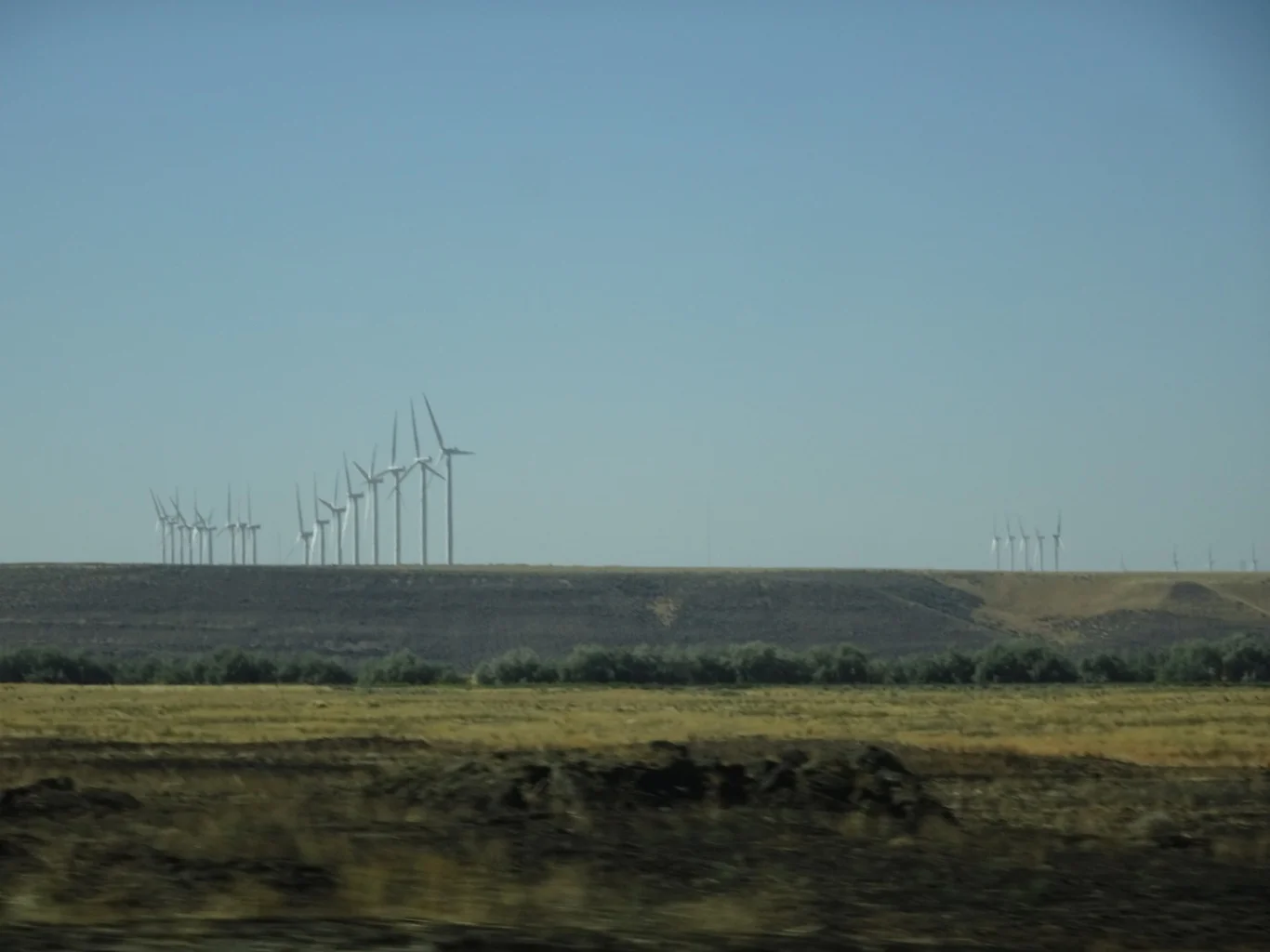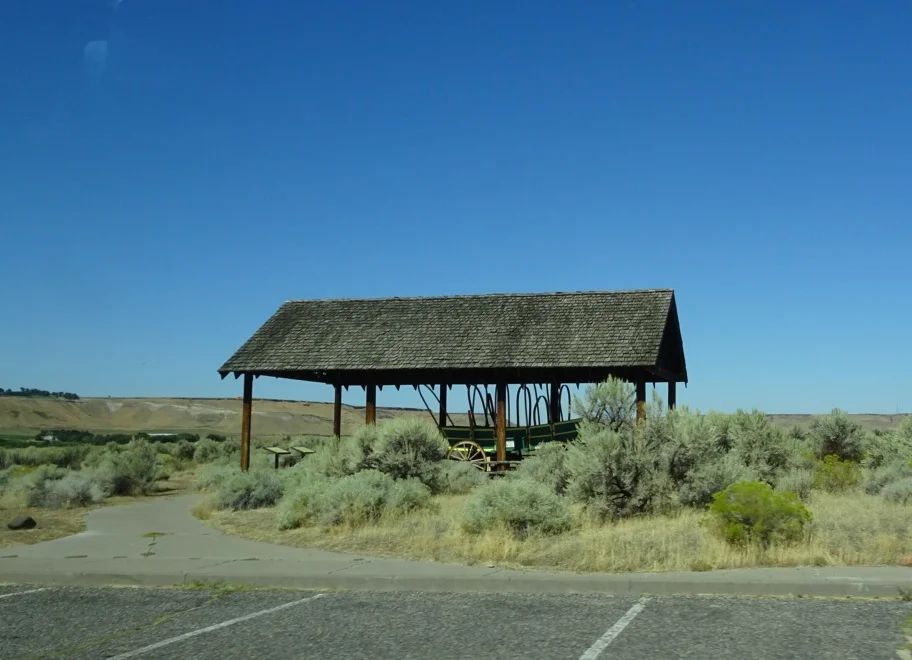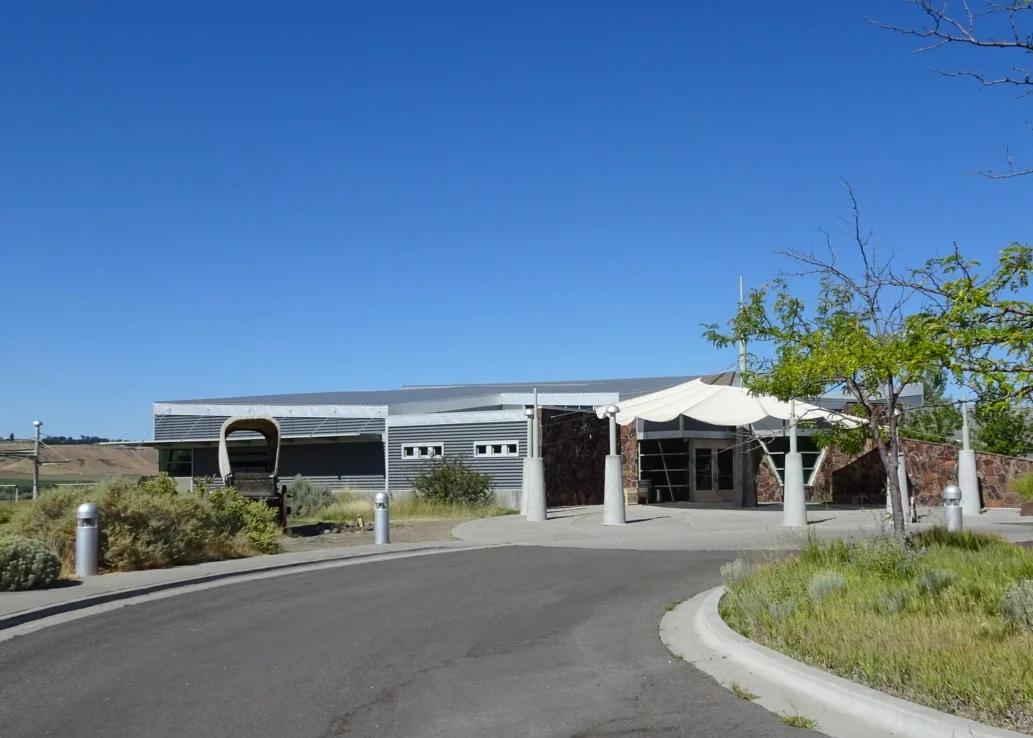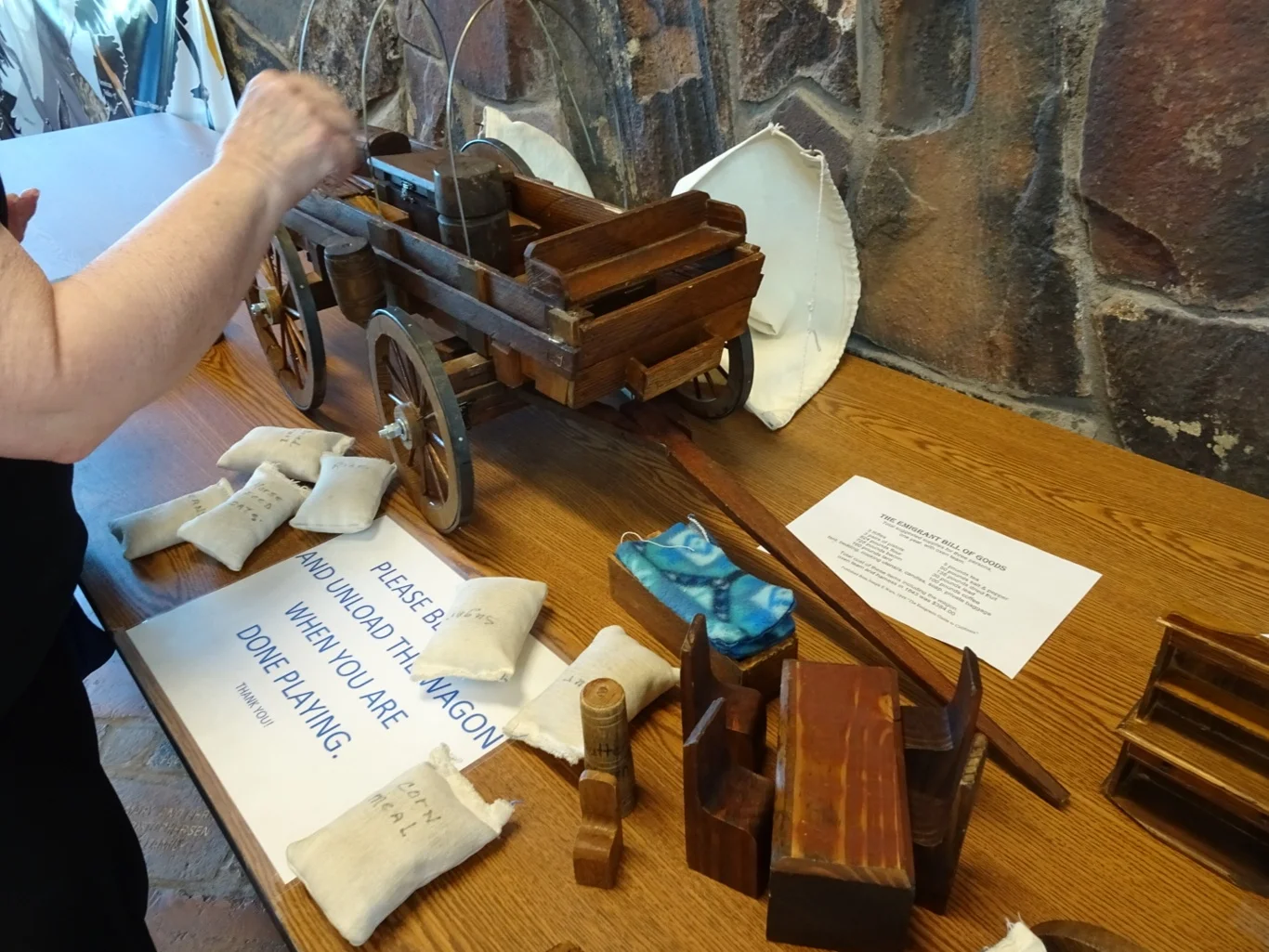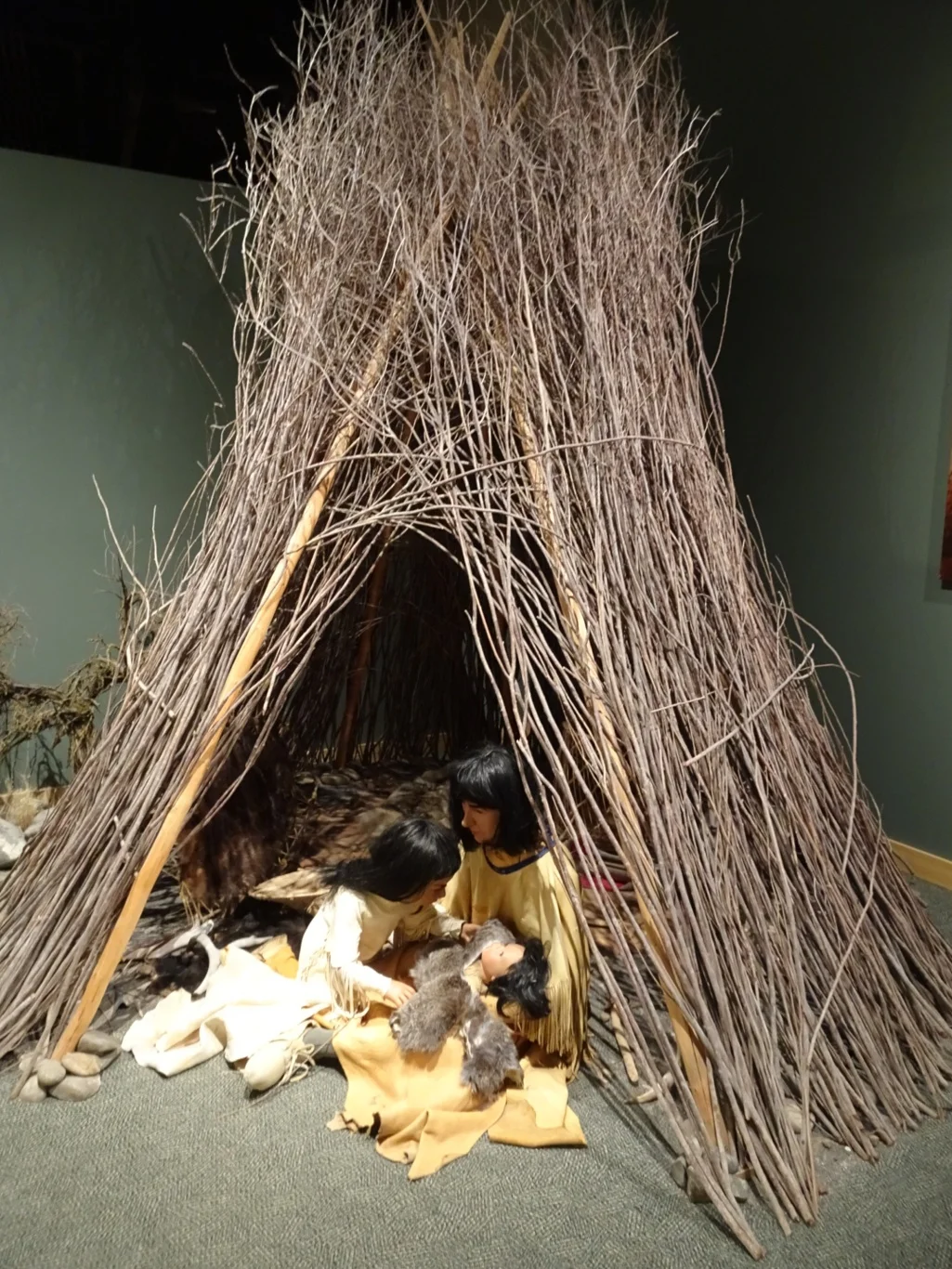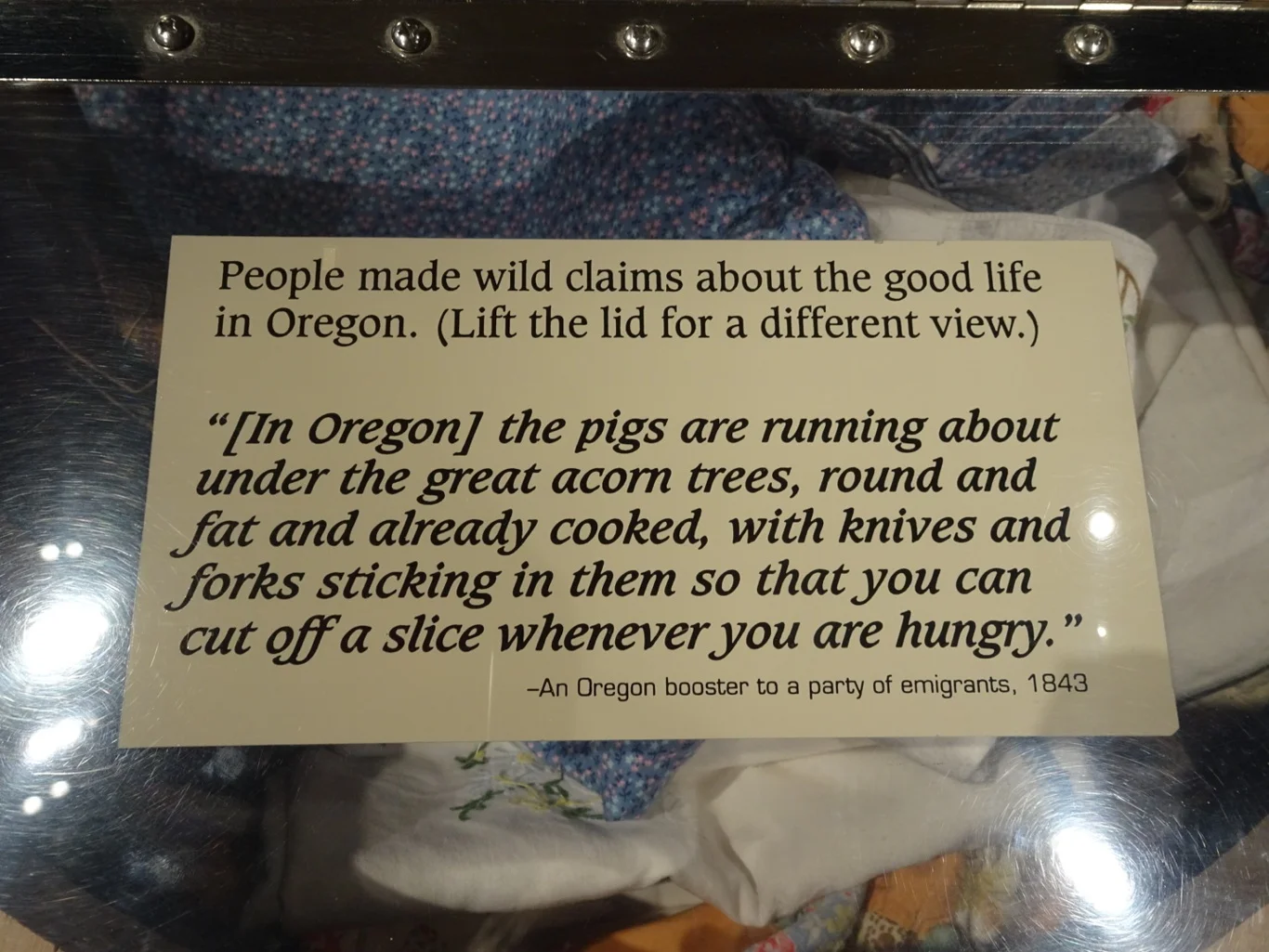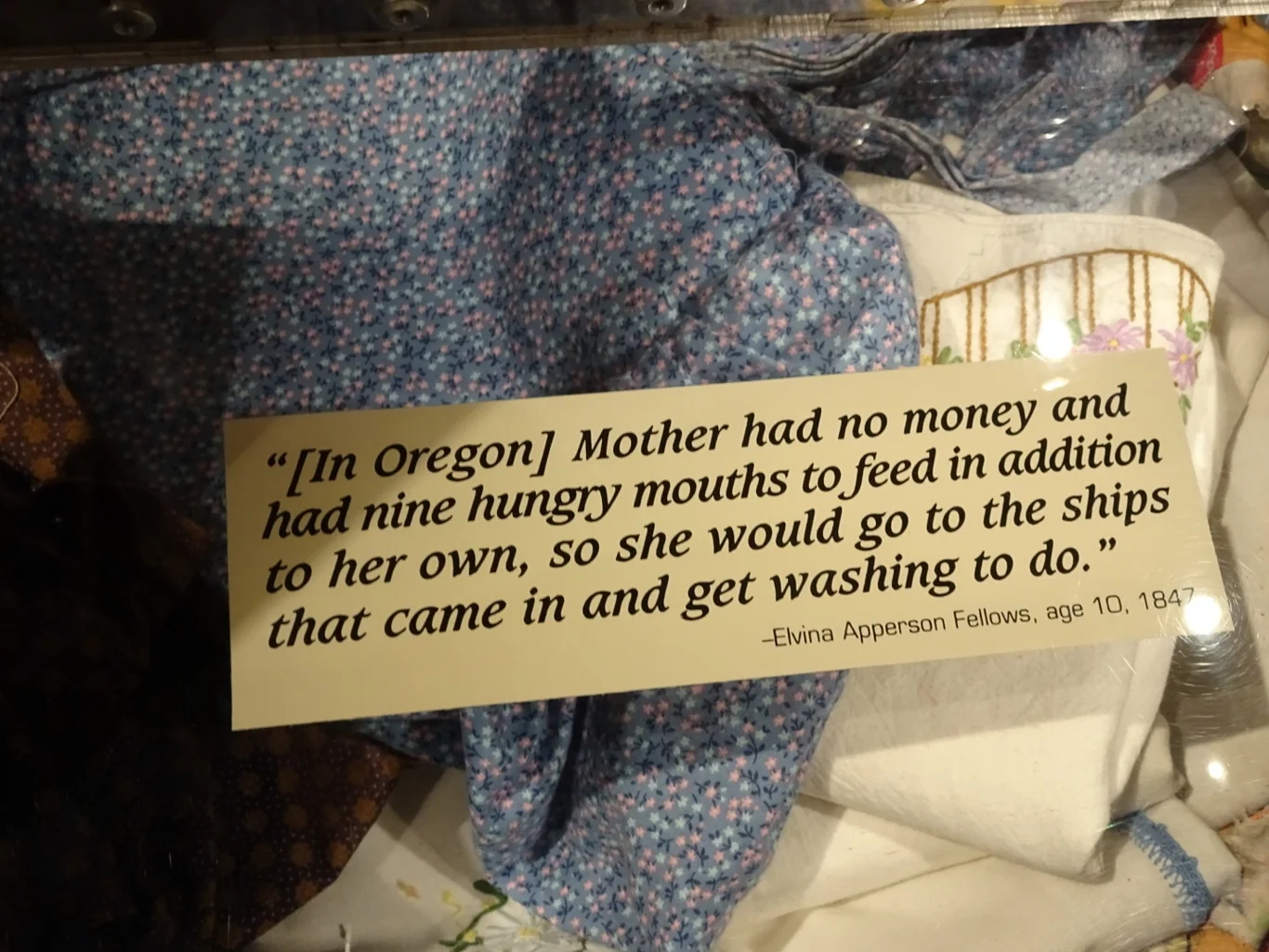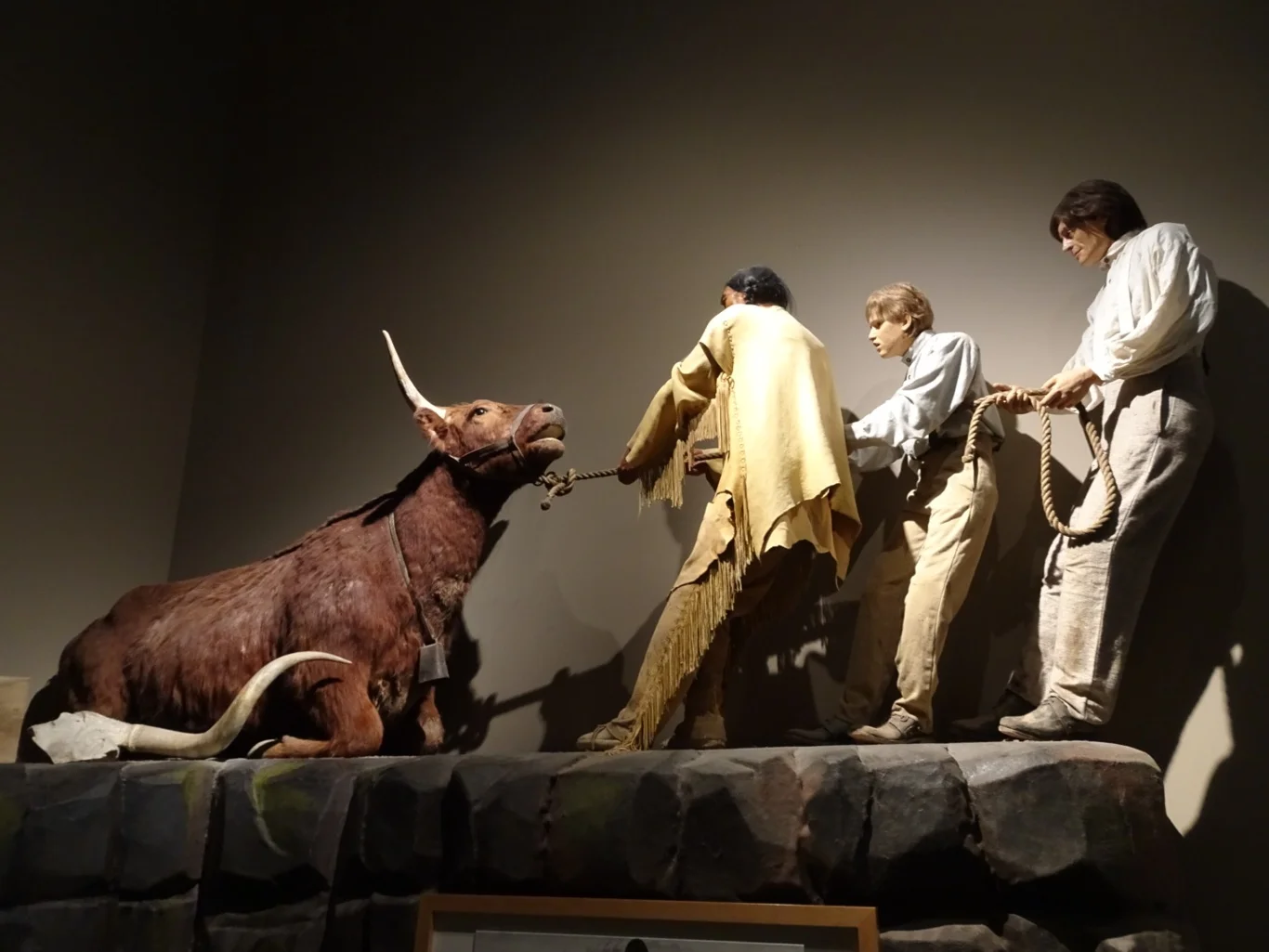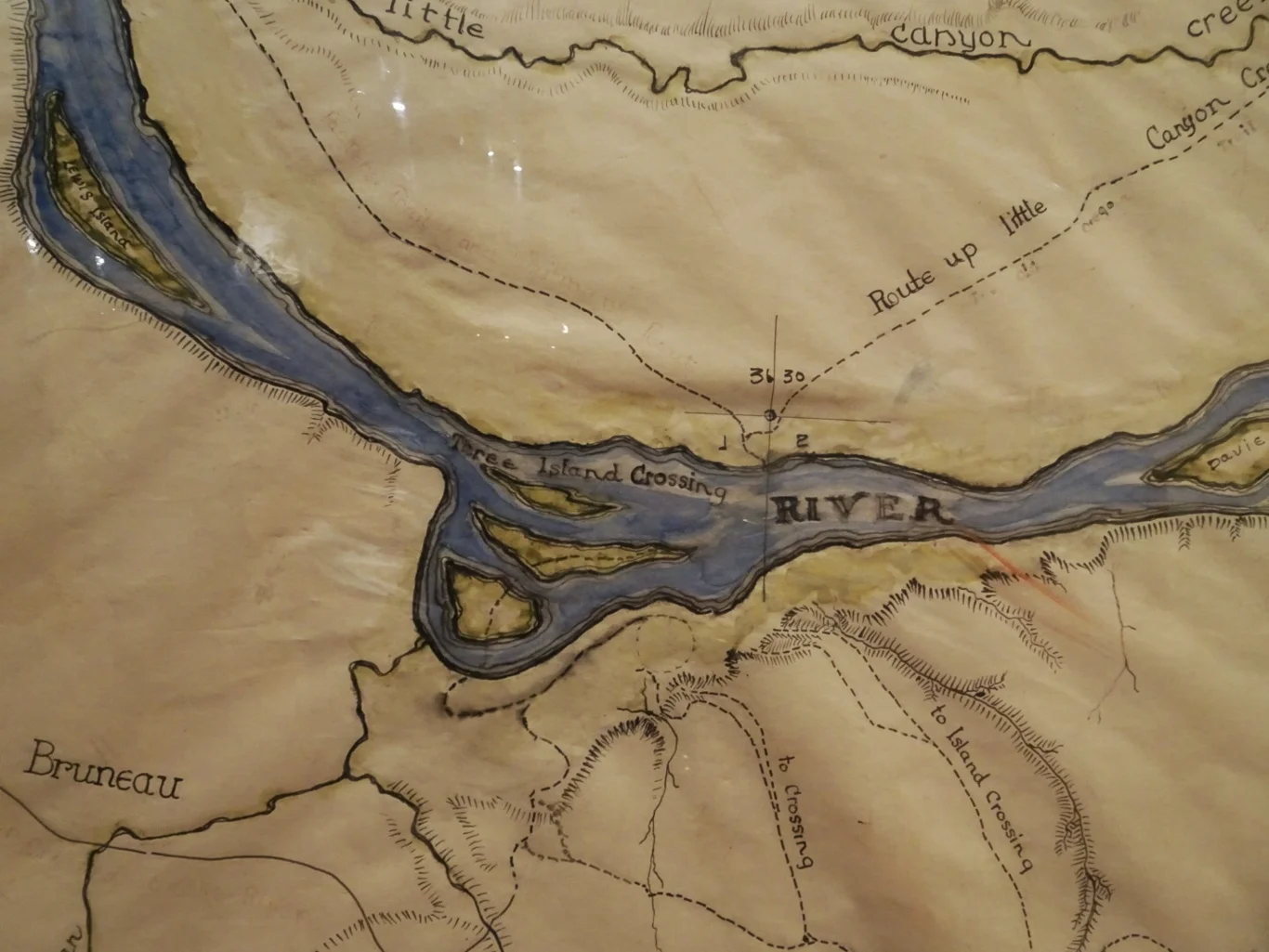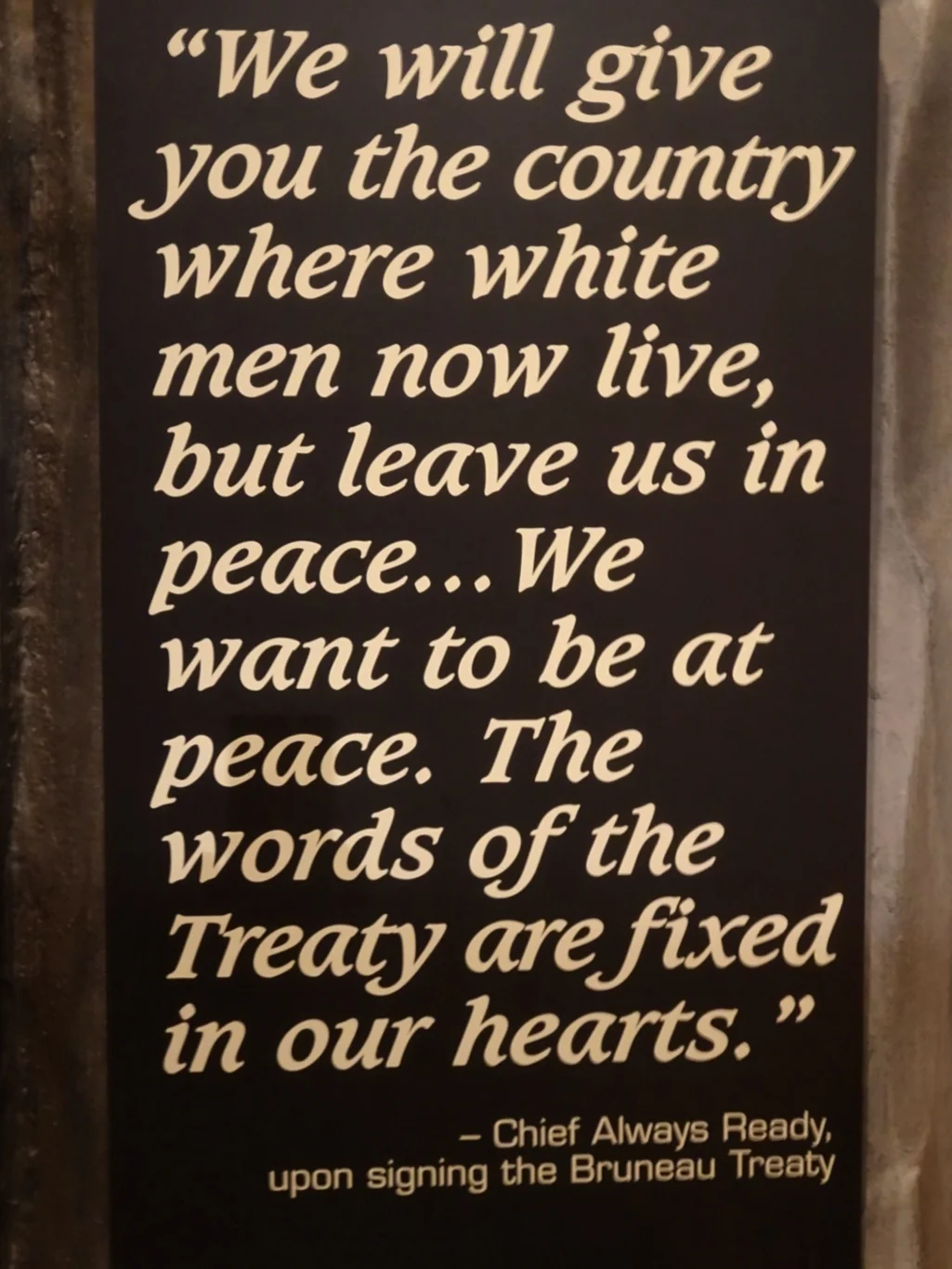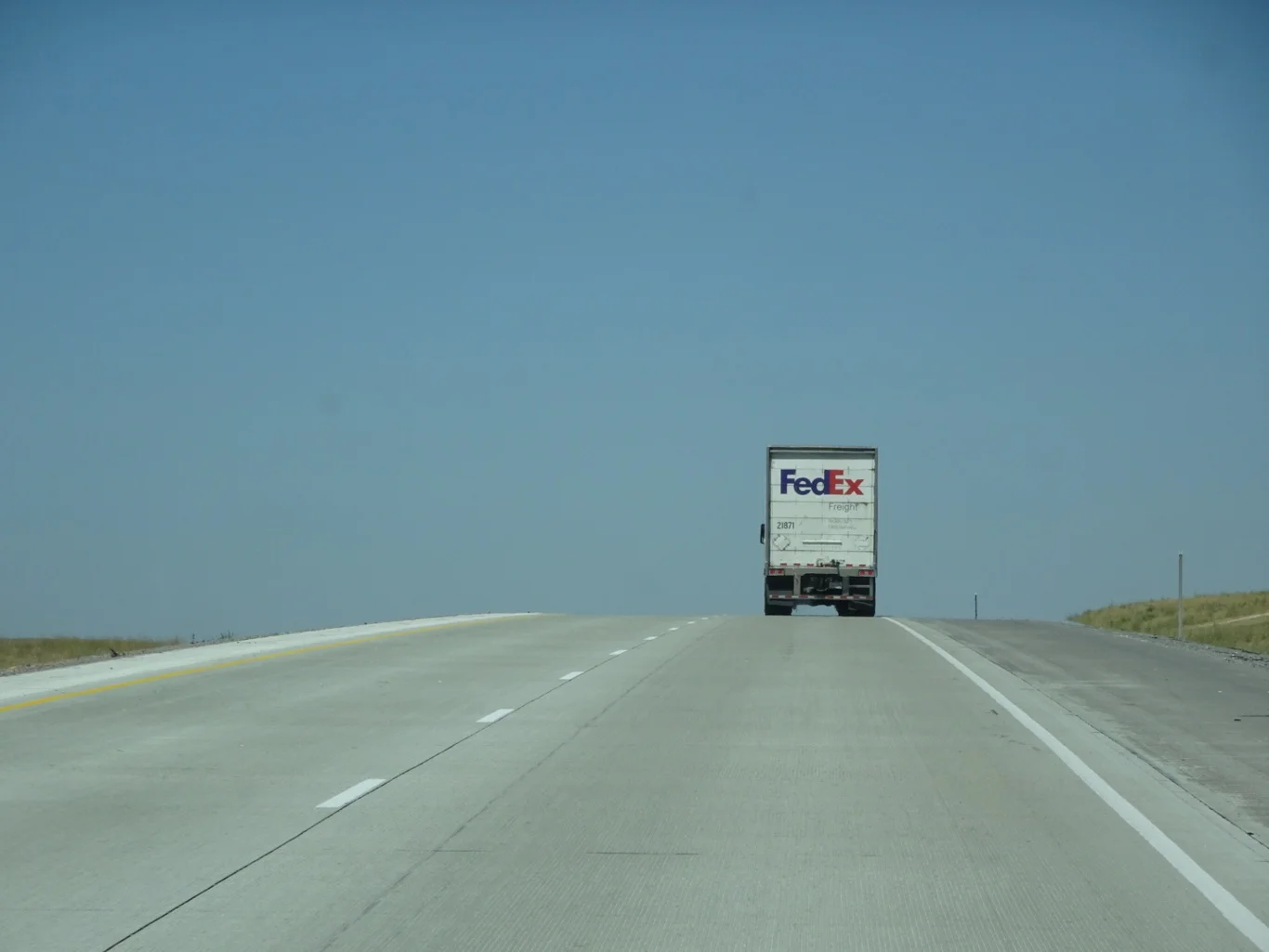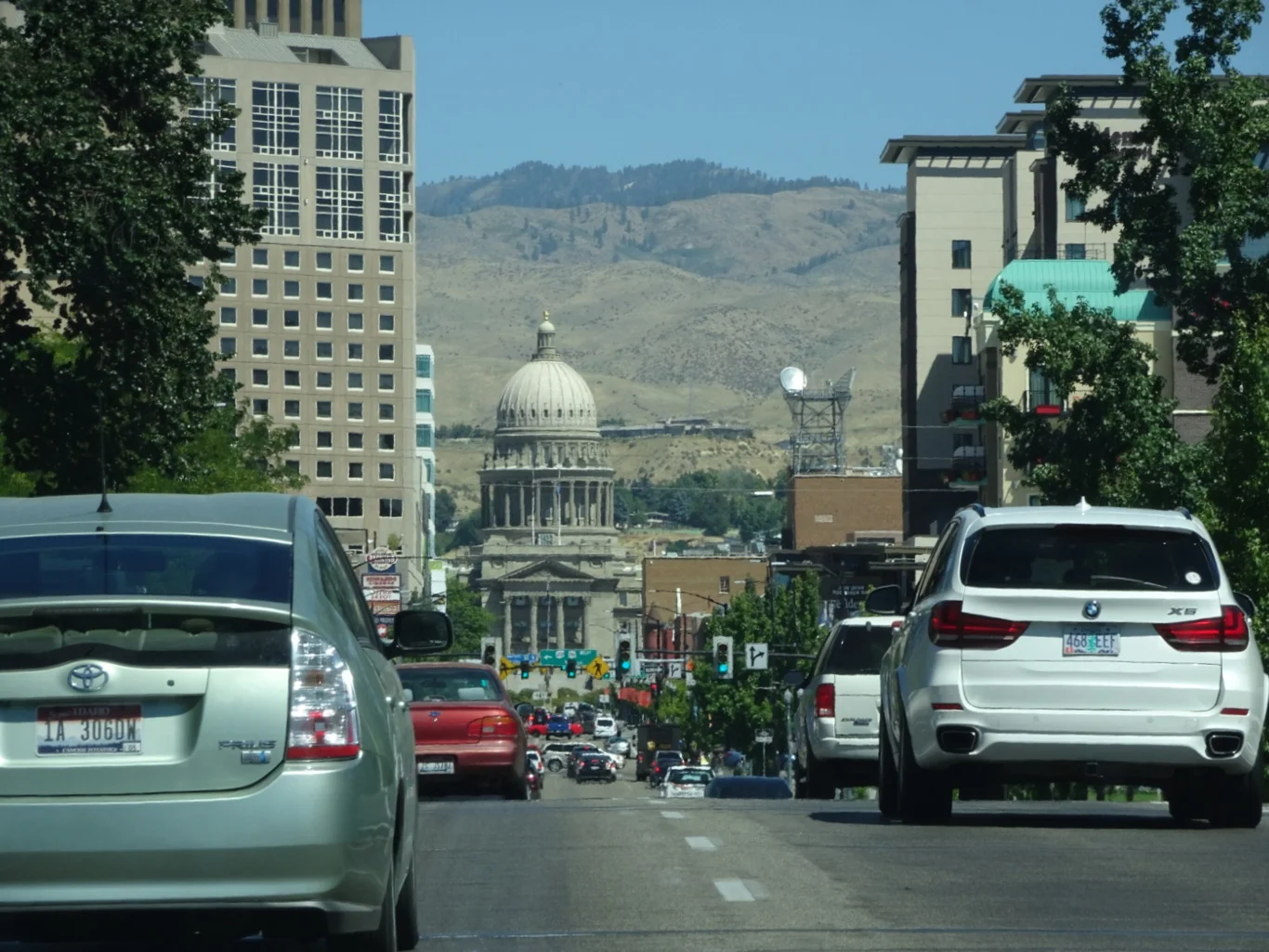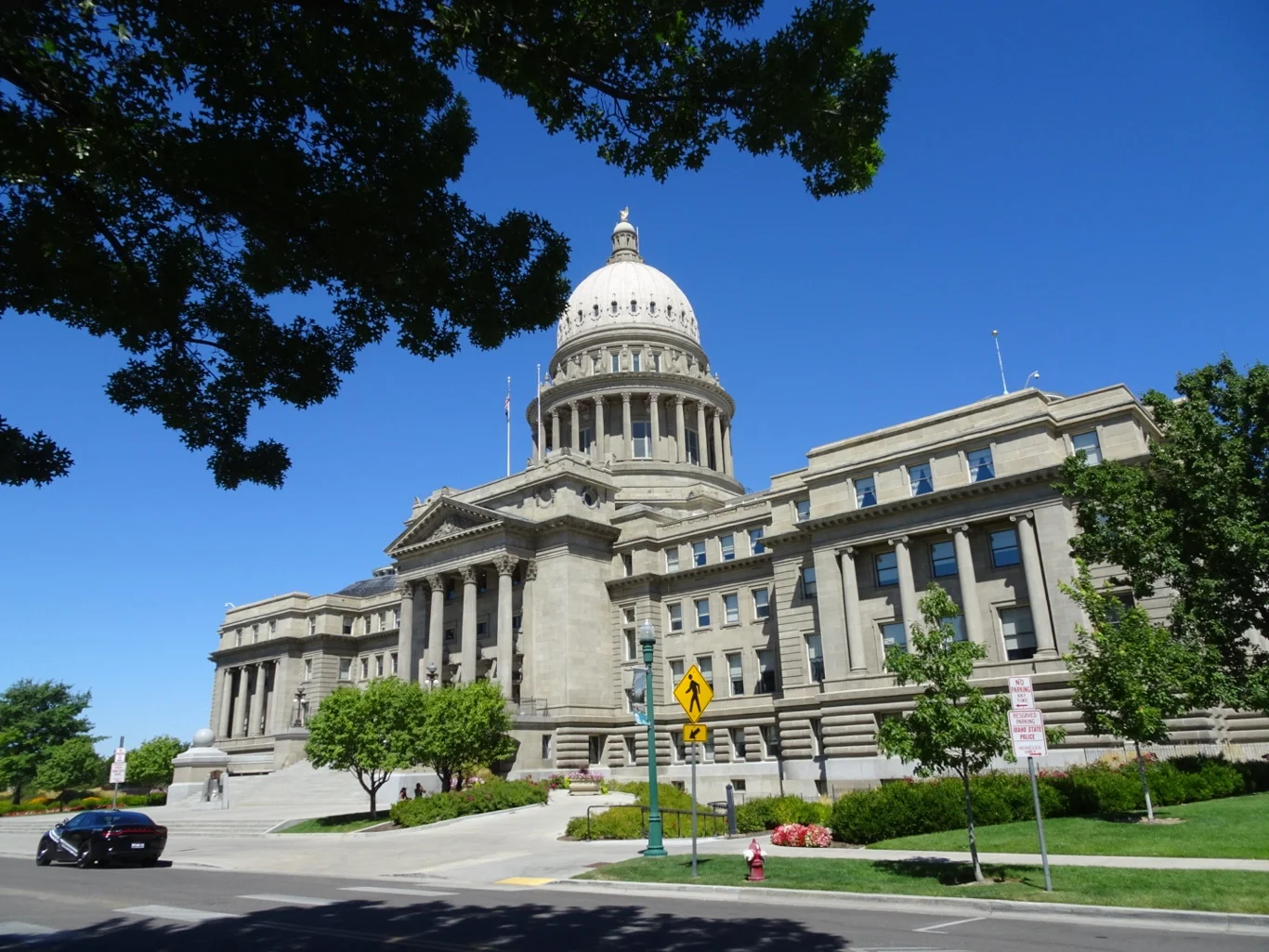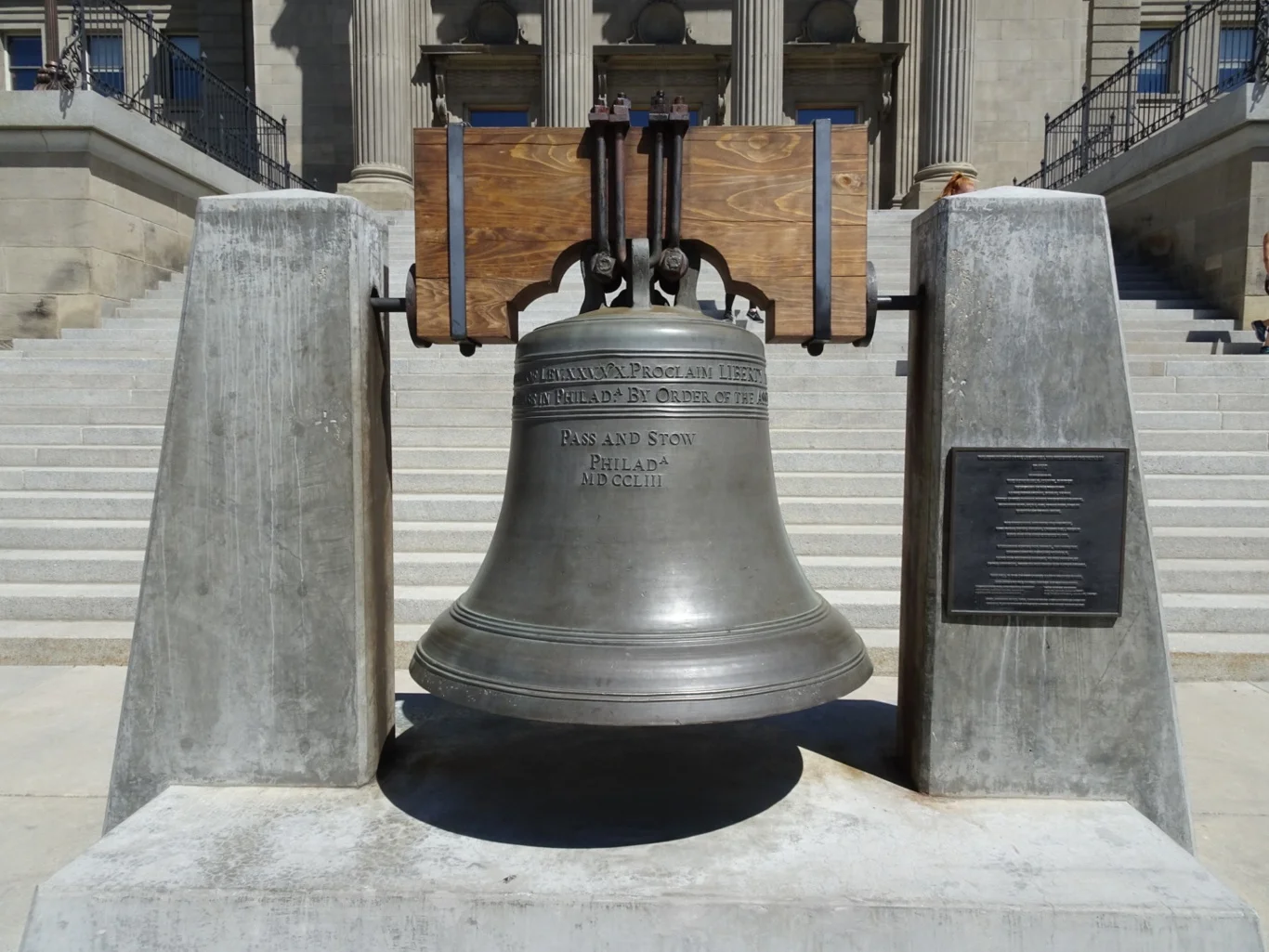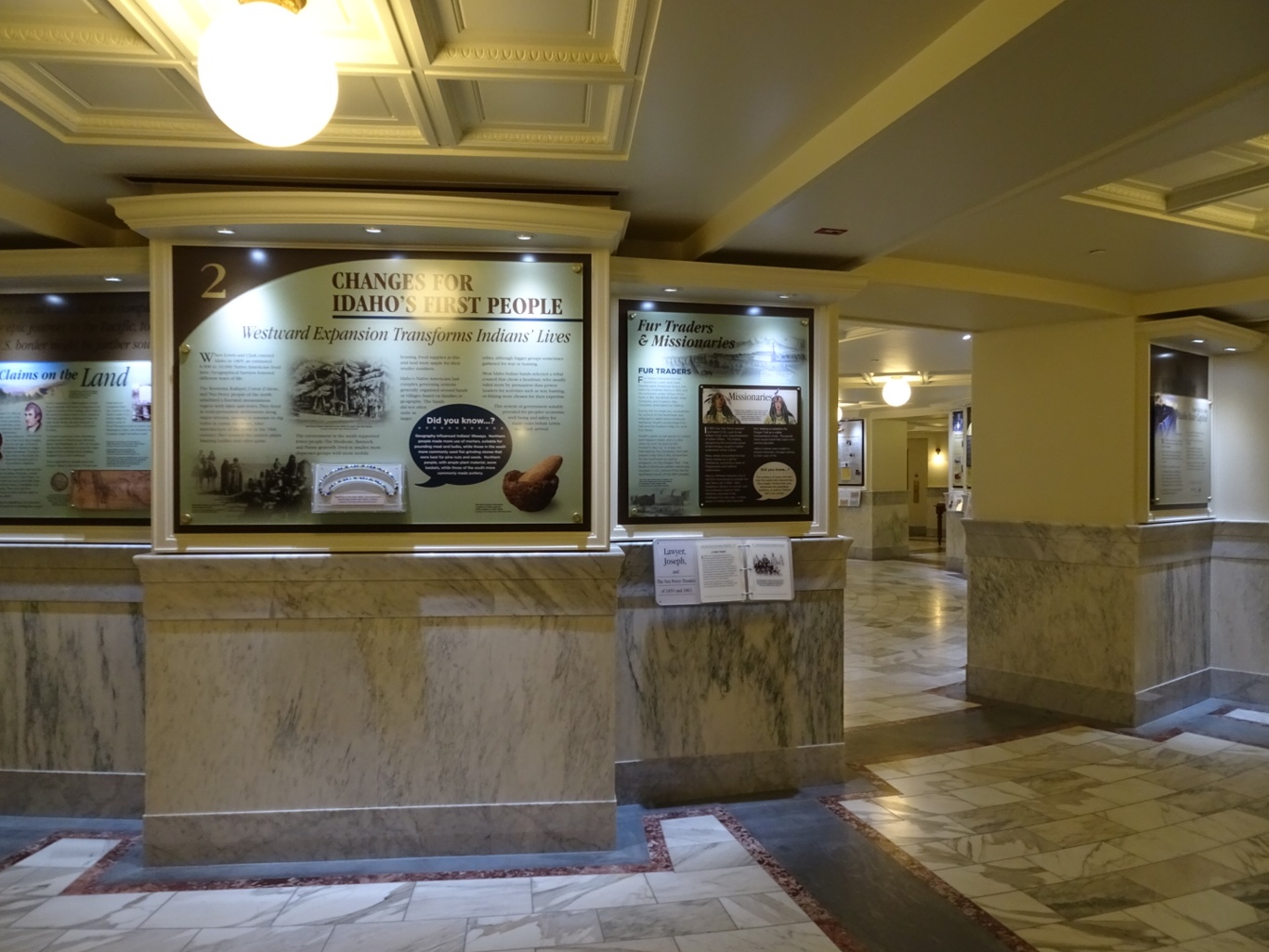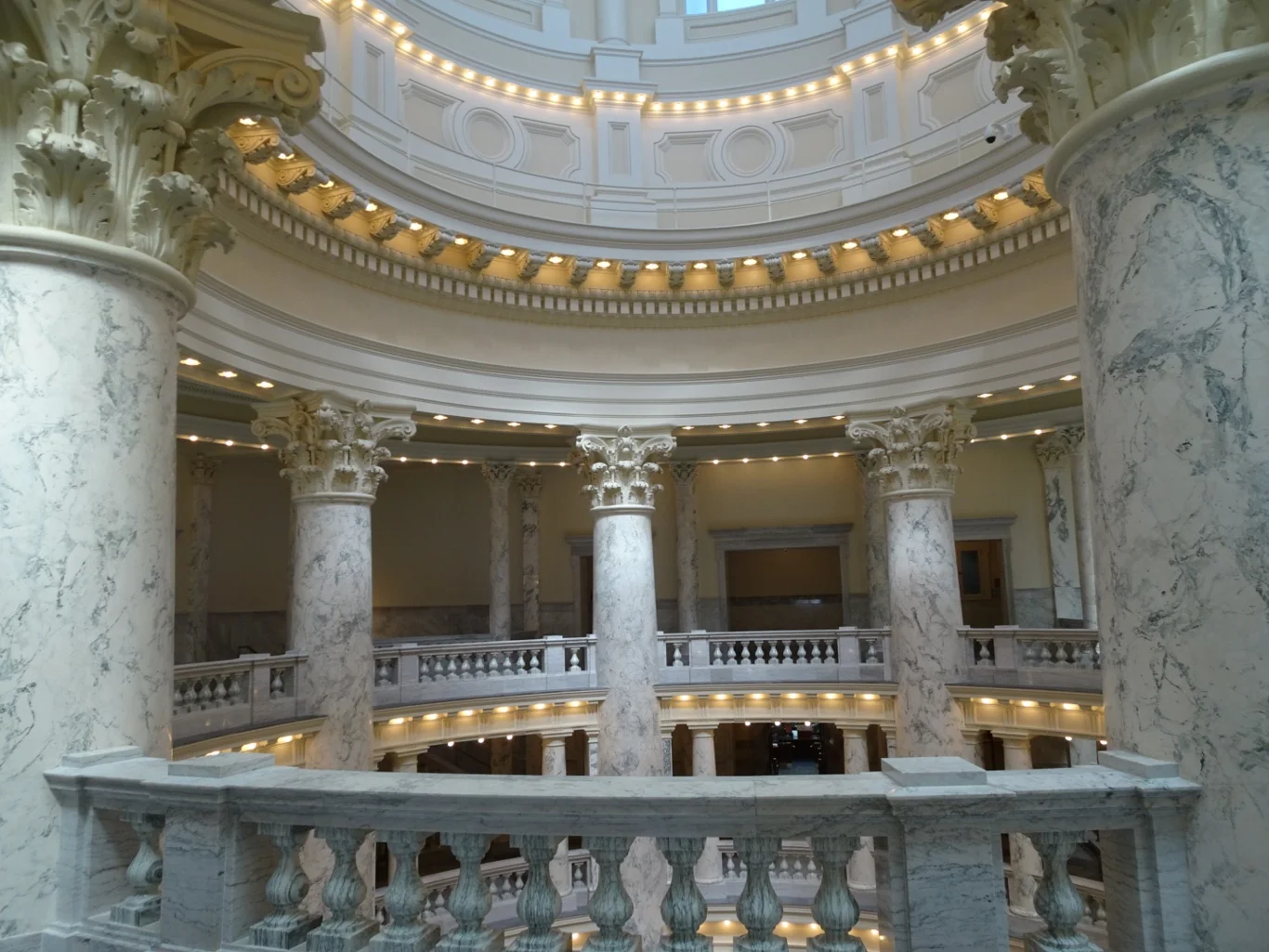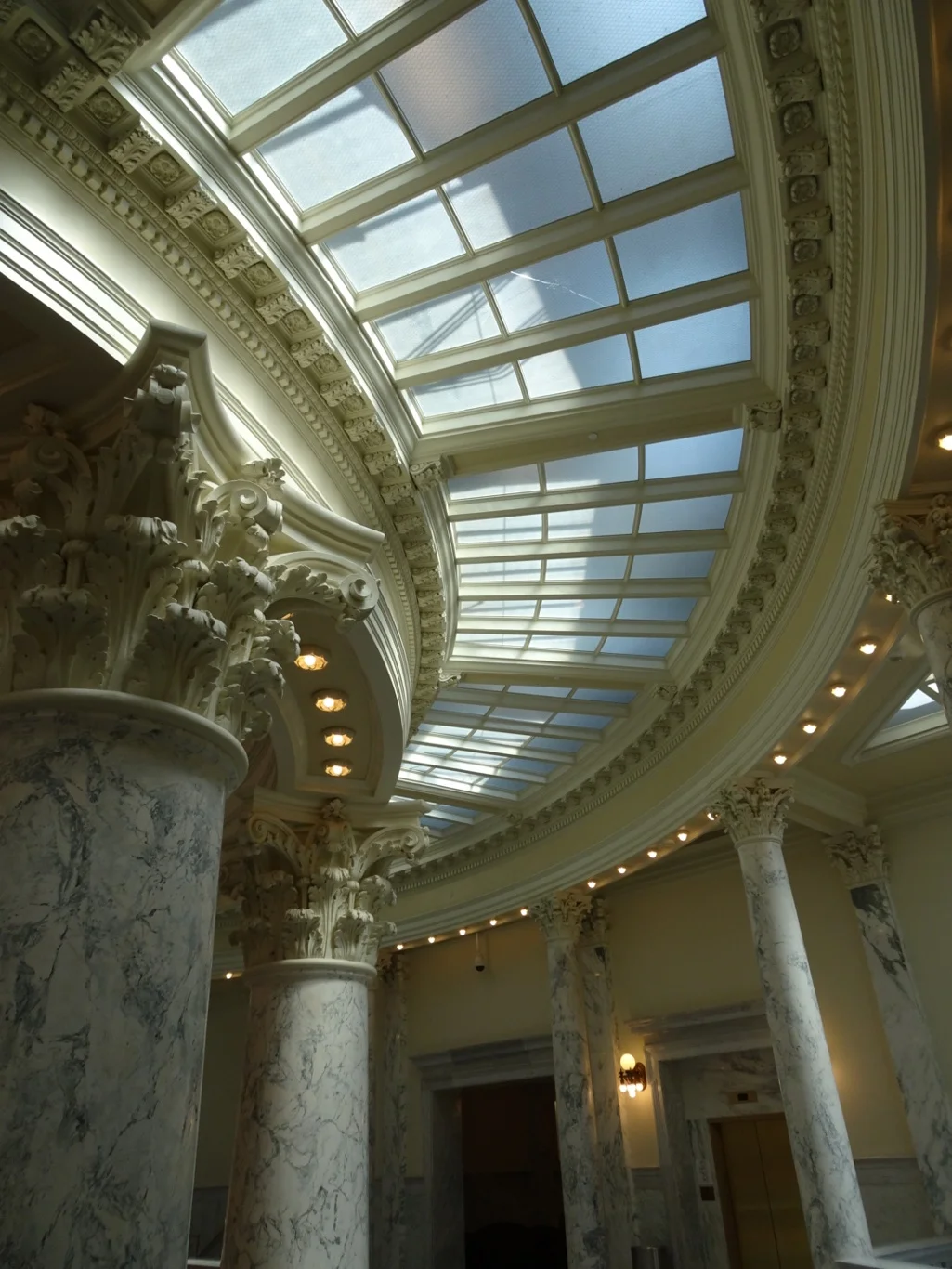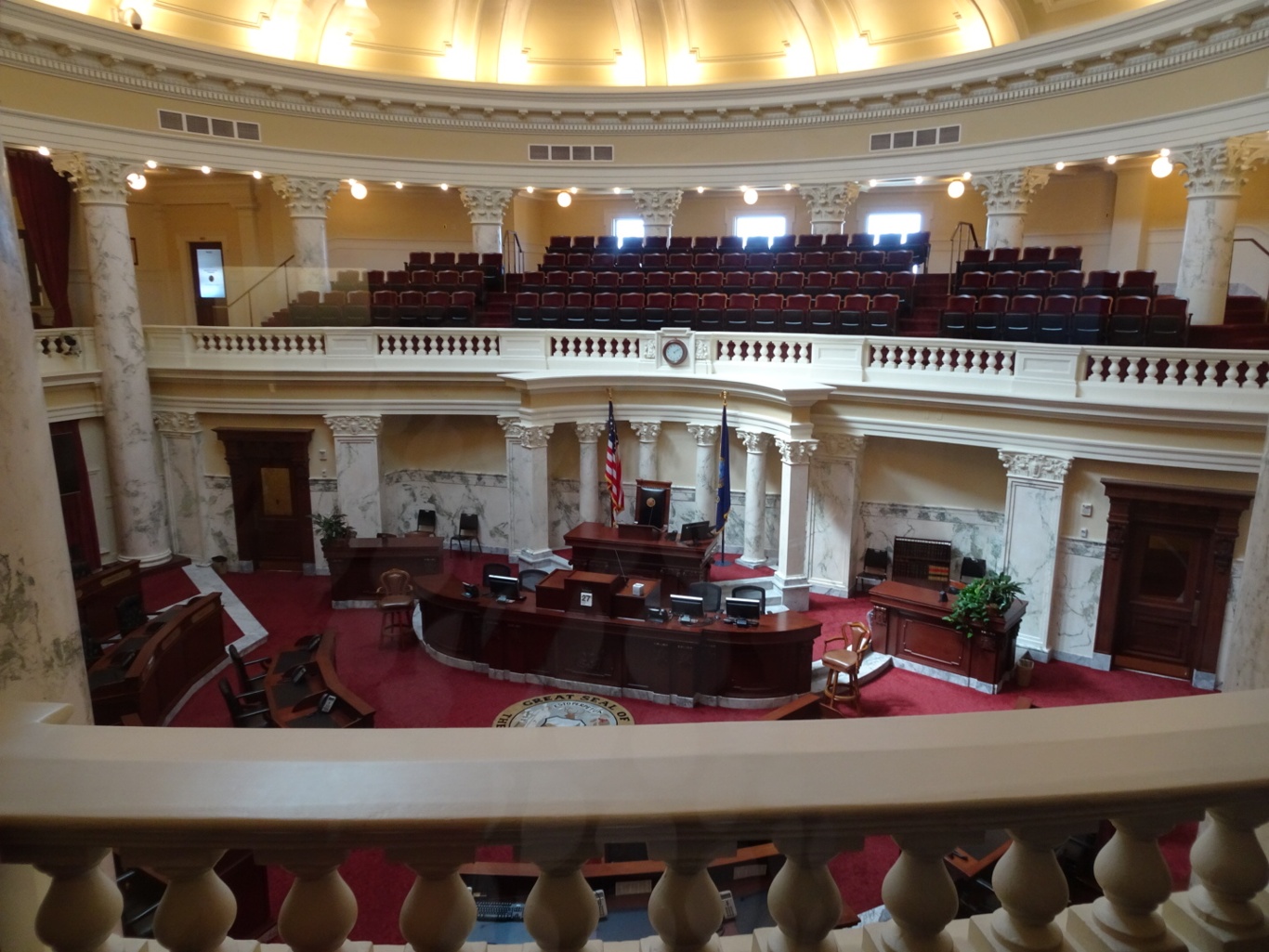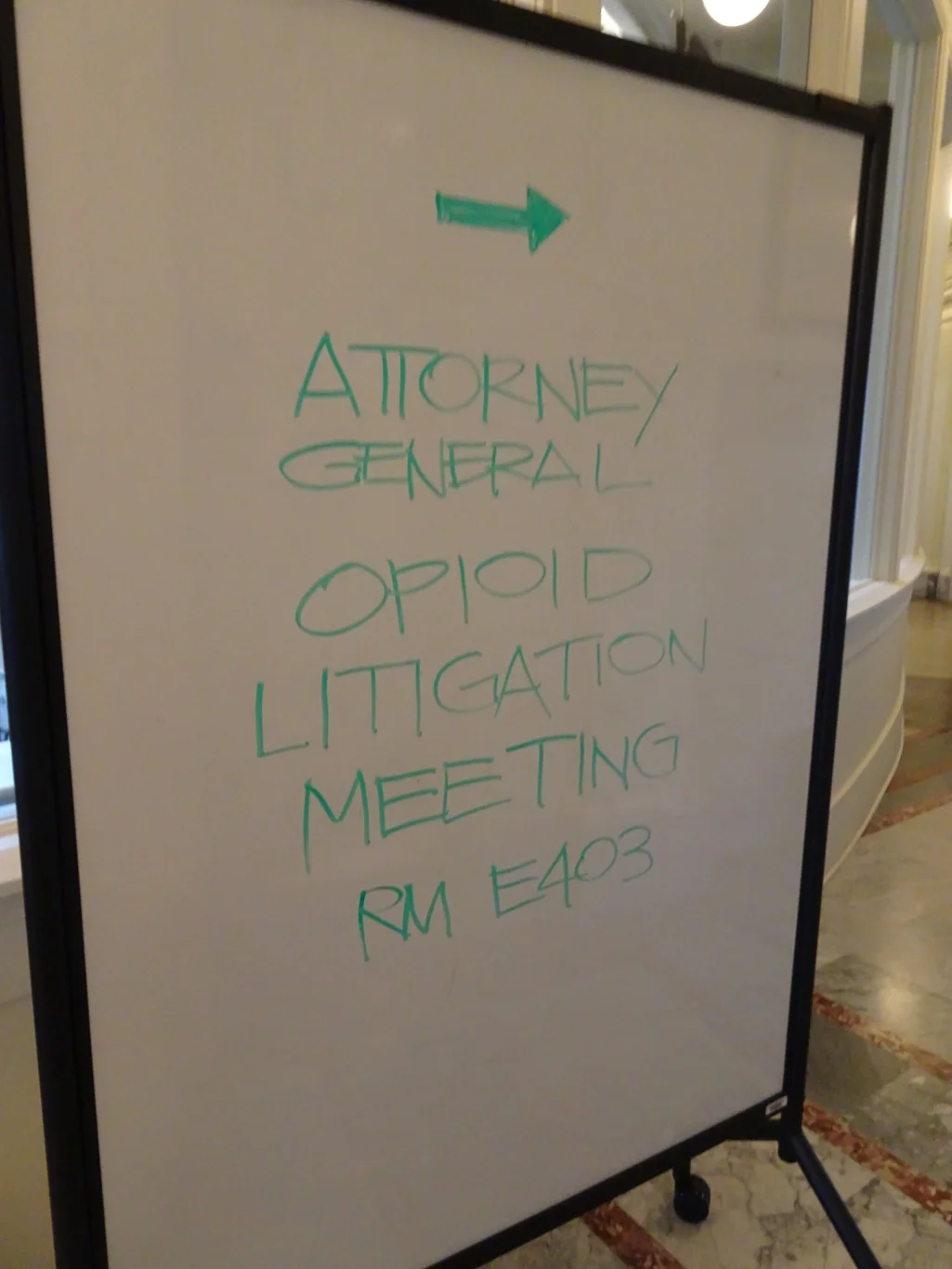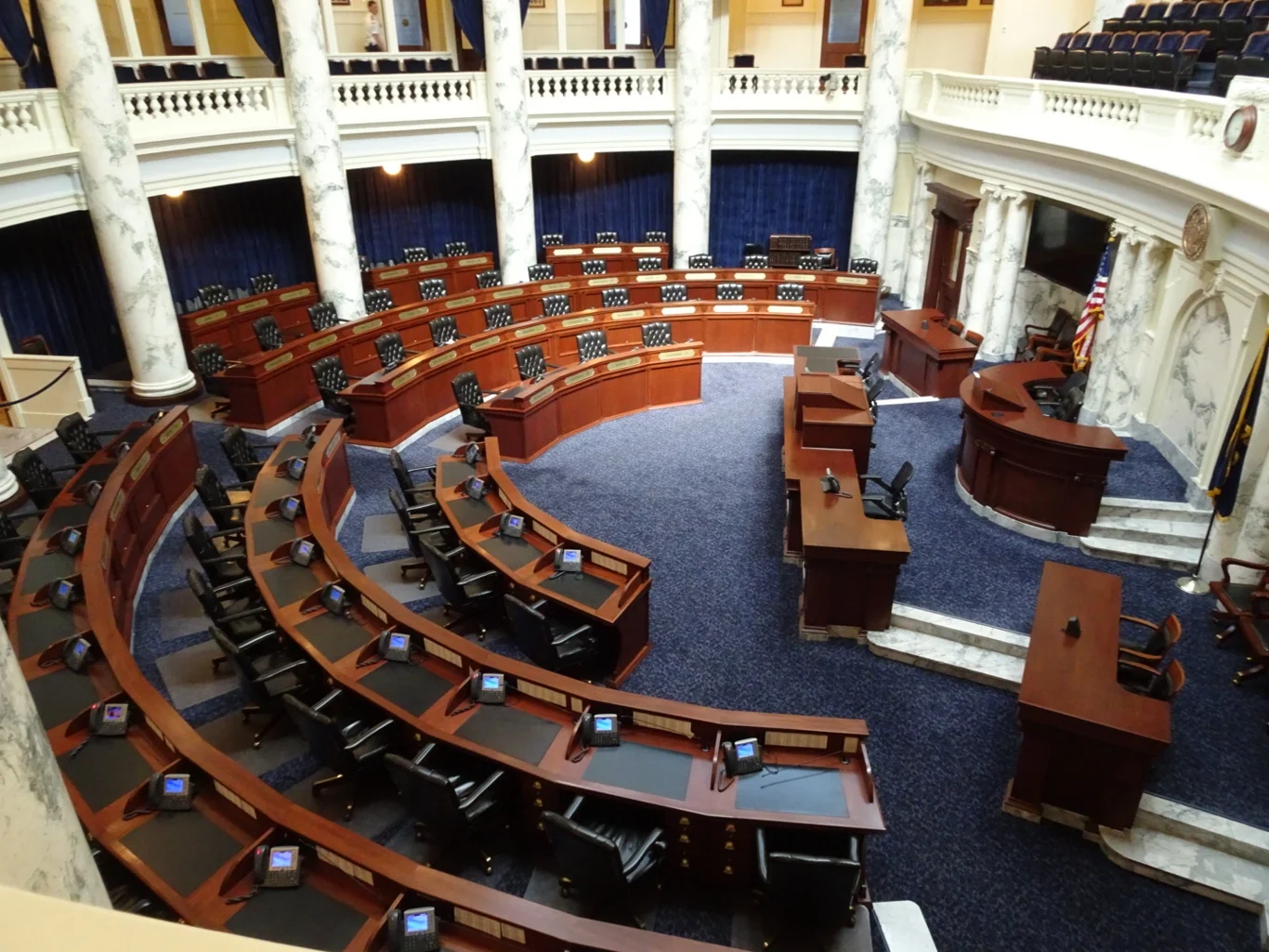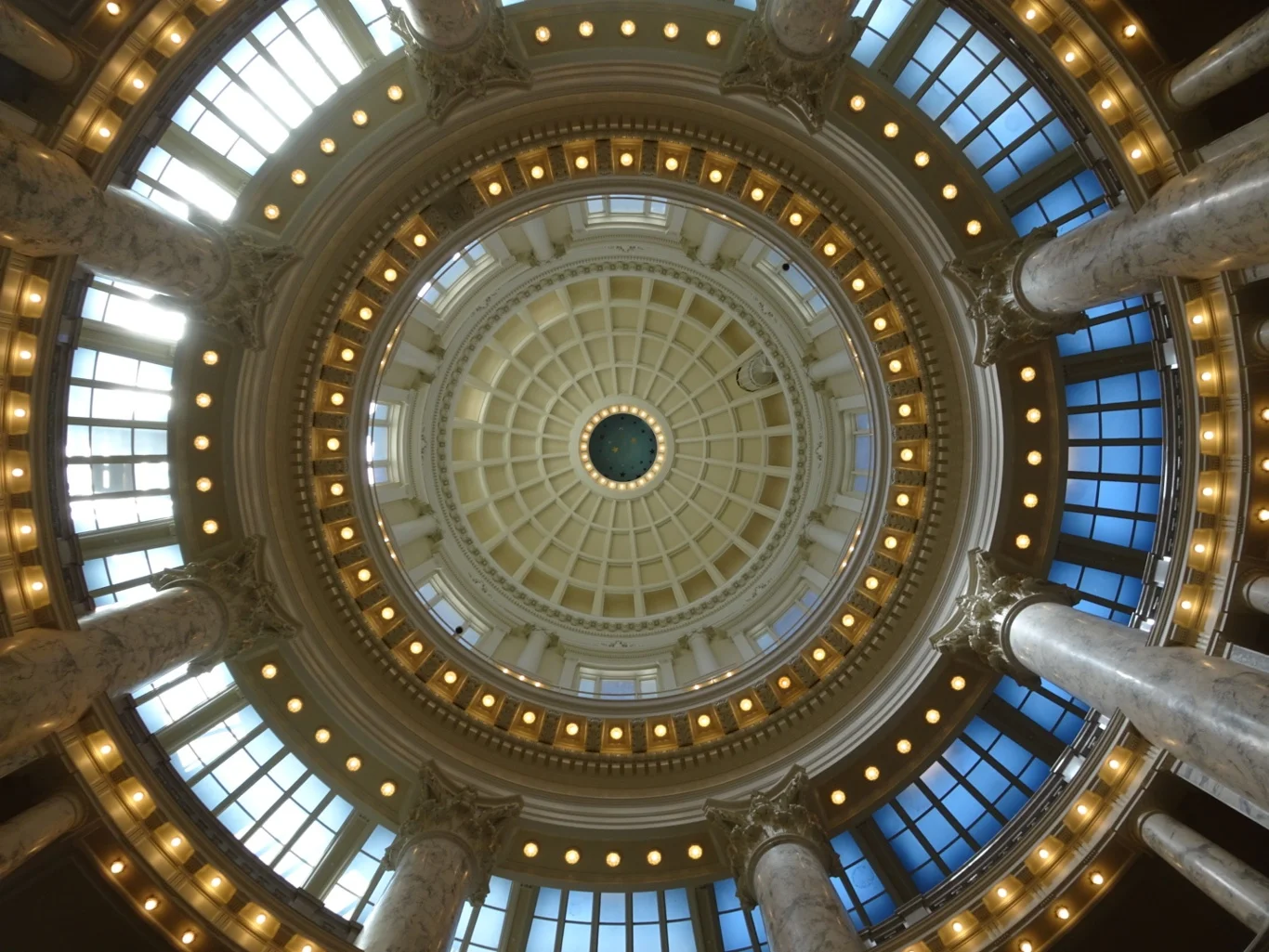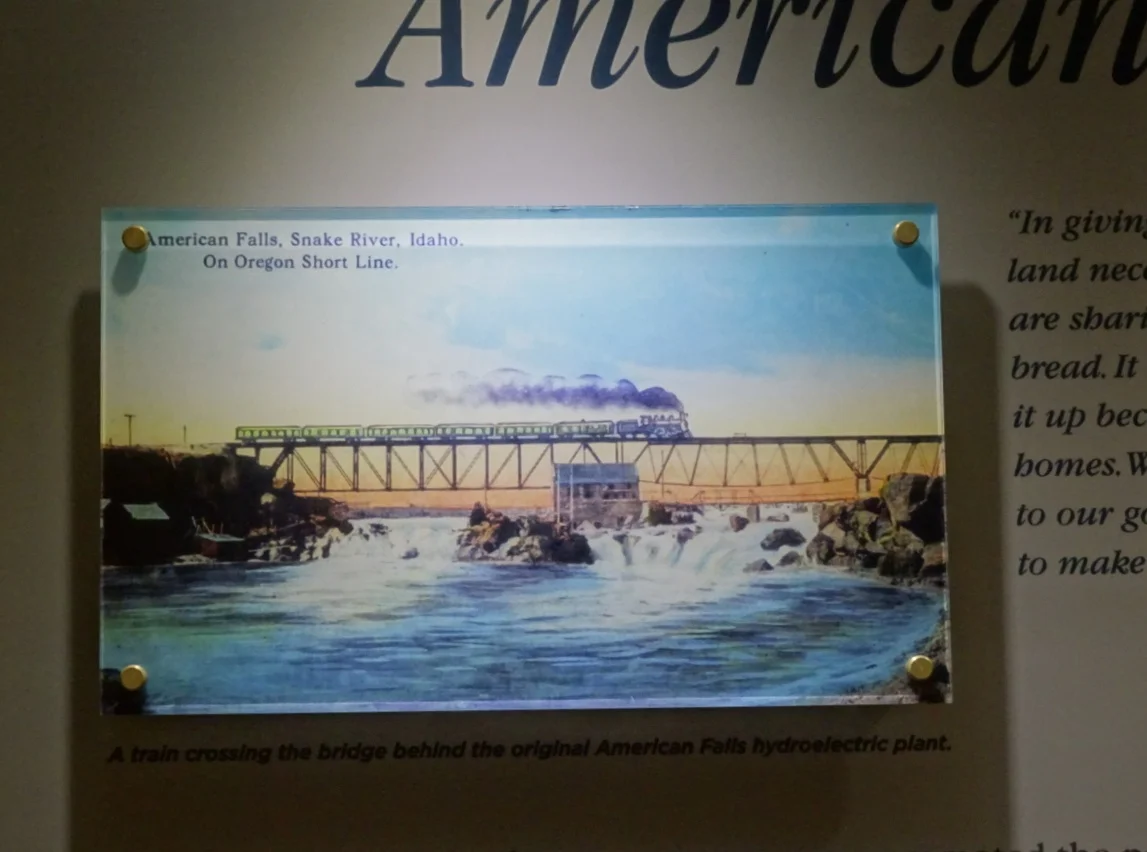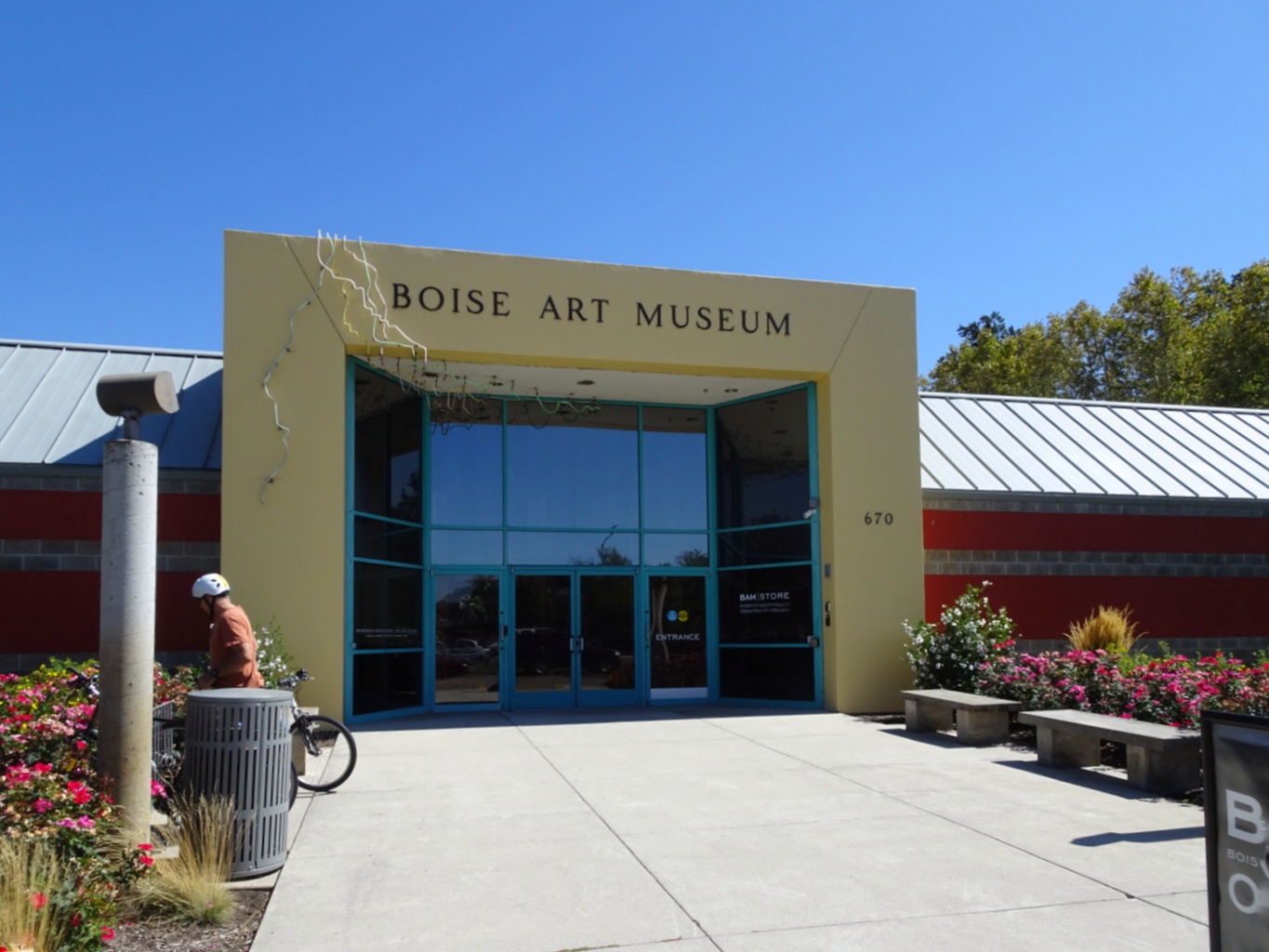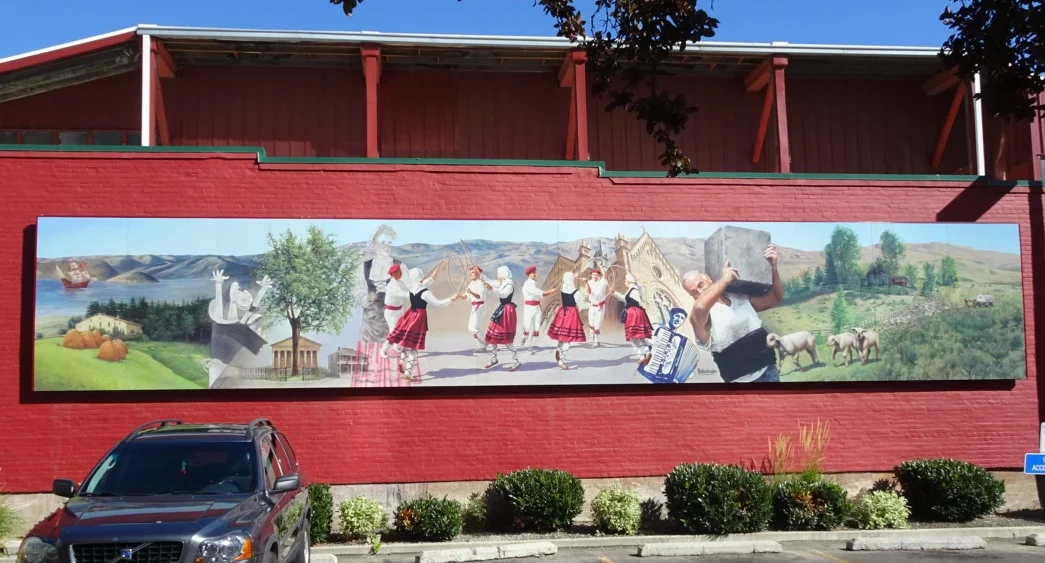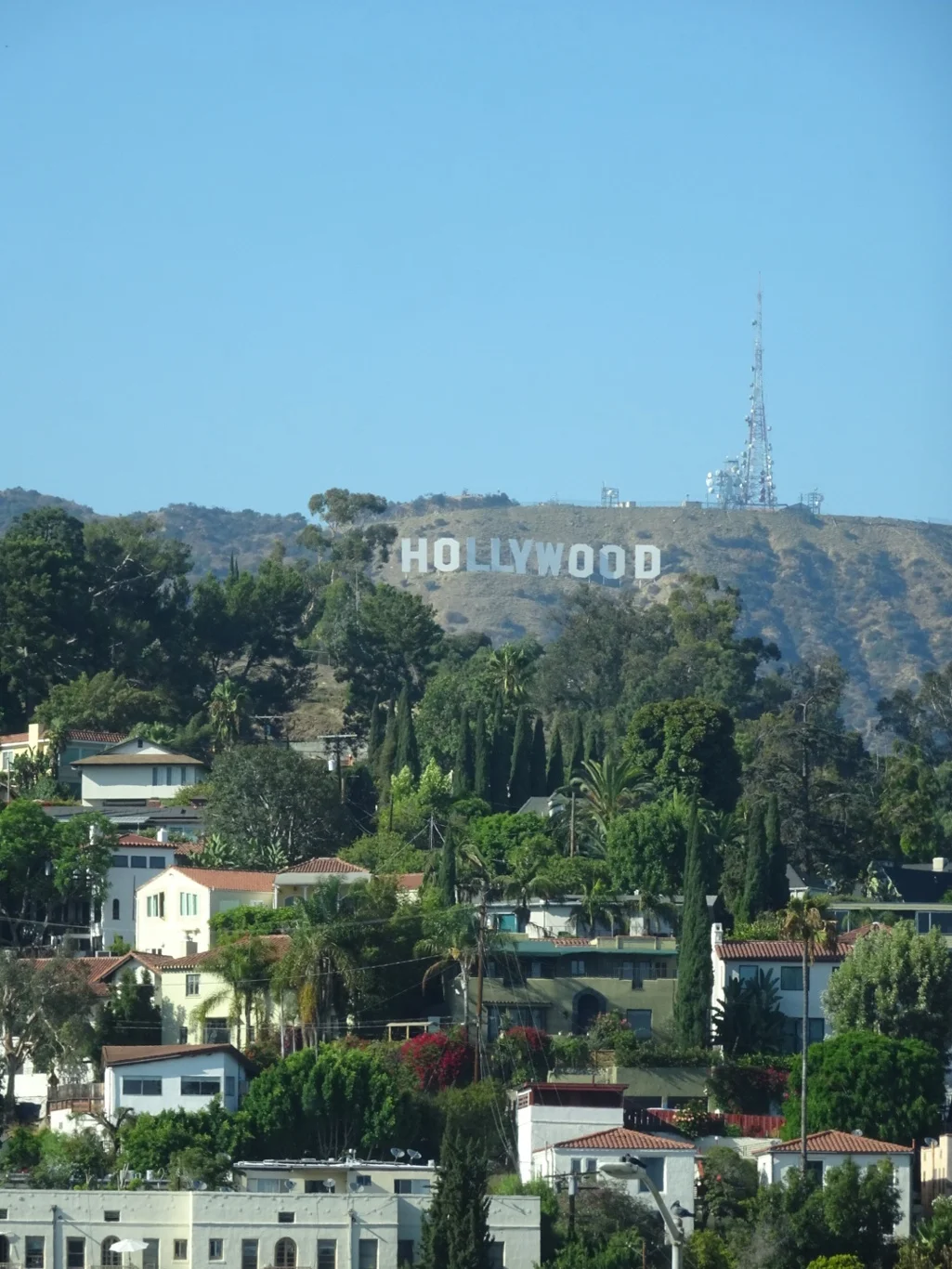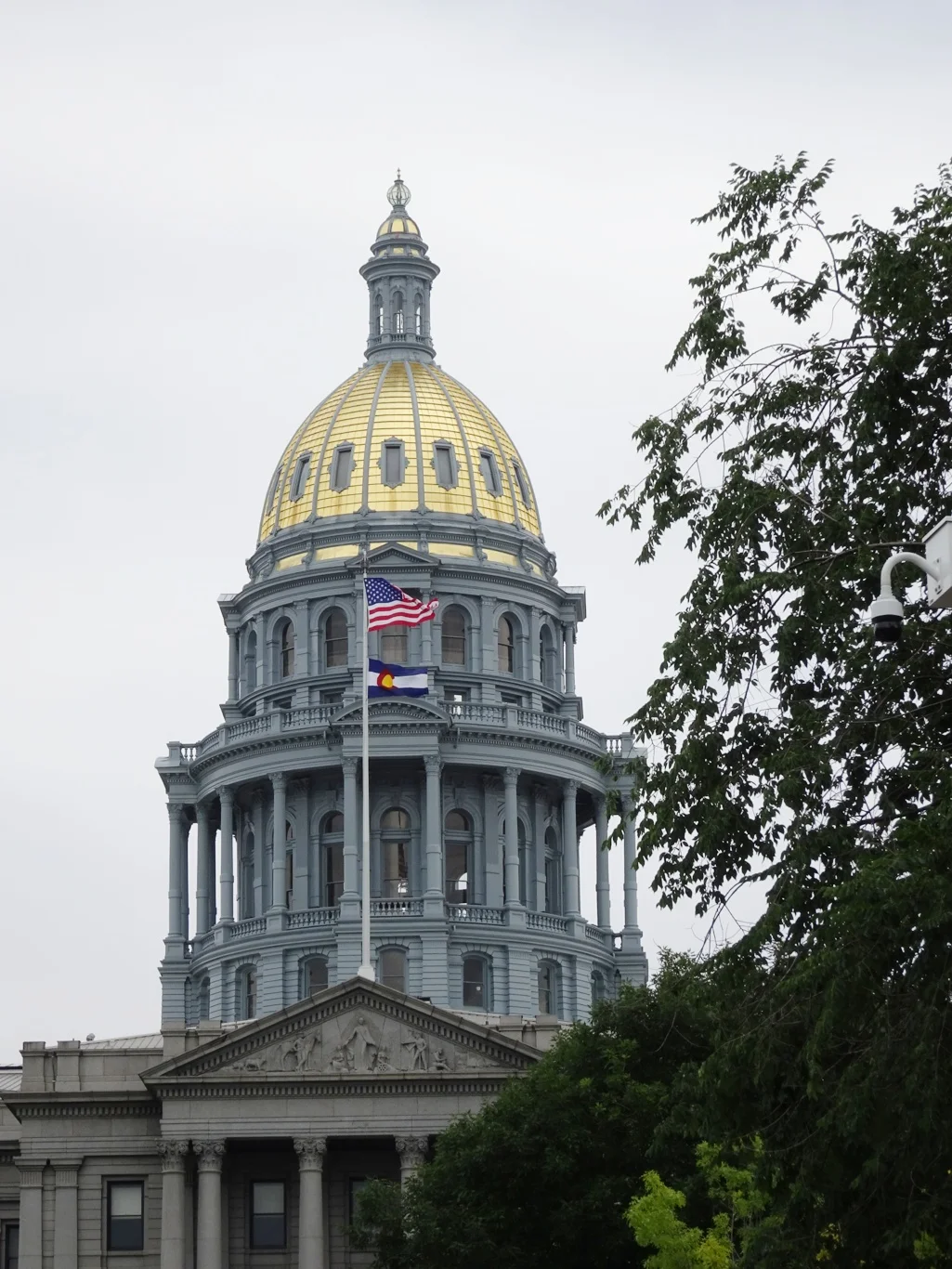O Idaho!
We drove out towards Boise this morning, over the high bridge across the canyon. This area is full of these cliffs, all created as a result of the Bonneville flood, we understand.
Safely over to the other side and beyond the suburbs, we found ourselves in intensive farming country, with all the paraphernalia that involves.
Huge intensive dairy operations with hundreds of Hosteins lined up along the feeding troughs or sheltering from the sun under the shades.
And rows of silos for storing feed? Fertiliser? I have no idea.
Our first stop was in Hagerman, site of the Hagerman Fossil Beds. What was here? We had no idea, but every one of our guide books recommended this as a must see and so here we were.
Stepping inside, we didn’t know what to expect - were the fossil beds here? No - they were on a remote site out of town and these days the fossils are more or less worked out. So this was a collection of the best finds - a fossilised mammoth foot for instance - but the main focus was given centre stage.
The Hagerman Horse skeleton was here and the Ranger explained what made it distinctive - it’s single-toed, he explained and having found 200 complete skeletons, one theory was that they perished in the Bonneville flood too.
A mural gave a better idea of how they looked than the skeleton did!
Whilst chatting to the people in the visitor centre, we explained that we were heading for Boise, having followed the Oregon Trail as far as here. We’d be heading for Three Island Crossing next, then, she said. Except we hadn’t planned to do that… Reading the entry in our Oregon Trail tourbook though, we agreed that we probably should!
Back on the road then, Idaho-style!
The scenery was distinctive!
But it wasn’t far to the Three Islands State park. We drove right past the wagon - we have seen quite a few of them along the way.
The bright, modern visitor centre was right there on the bluff and Sue, the ranger, offered a cheery welcome.
Mary lost no time in packing the wagon up. But what to leave behind?
The woman in Hagerman had described this museum as “one of those fancy modern ones that know where you are”. What she meant was that as we walked around, we triggered audio and video clips, which brought the stories to life. What impressed me most however was that these stories were told from all sides - not just the pioneers, but the indians who were already here too.
It was interesting to read the words of the salesman back in Independence too, doing his best to persuade folks to part with their cash and join his party. We had heard this same story from Maddie, back in Montpelier a couple of days ago as well.
The reality was rather different, of course.
Many of the diaries we’ve read - including the trascribed one I bought the other day - were written in the later years of the trail, when there was a great deal of antagonism between the Indians and the settlers. But in the early days, both groups supported one another - the pioneers had goods to trade and the Indians were happy to share their local knowledge and offer support in more direct ways too.
We heard how local indians would swim across the river leading a horse, or assist with getting a wagon over the “stepping stones” of the three islands. The river was fast flowing and they knew the currents well.
Sadly the cooperation didn’t last forever.
We continued through the museum, learned a little about the early settlers of Glenn’s Ferry and watched a short film about the trail before realising we needed to get back on the road ourselves - there were places in Boise we wanted to see!
With an 80mph speed limit on the freeway and not much traffic, we were soon there.
As we drove into the city, we could see our first destination right ahead of us. The Idaho State Capitol.
Regular readers will know that we enjoy visiting these fine buildings and getting an insight to the character of a state. Only last week we were in the Wyoming Capitol building and we couldn’t miss out on the neighbouring Idahoan equivalent, could we?
We took a closer look at the replica Liberty Bell which hung at the foot of the steps leading to the entrance whilst a bunch of lycra-clad young women raced up and down the steps in the midday heat as part of their fitness routine. We were not tempted to join them.
The visitor entrance led us into the basement area, where there was a pretty comprehensive display about the state, the government and the Capitol building itself. The place was empty, so we helped ourselves to a couple of guidebooks and checked that we were ok to roam about. Except for fairly frequent encounters with one security guard who appeared to be doing a complete sweep of the building, we saw no-one.
This huge building was virtually empty - and sounded that way. We’d better not share any state secrets here in the rotunda because surely someone else anywhere nearby would hear every word!
The main feature I’ll remember about it is the light and airy atmosphere. The architect built in huge skylights which bring daylight into almost all the building. It makes a big difference, though perhaps the cold light of winter might offer a different result from the warm summer sunshine!
The Senate chamber was bright and airy too - nothing going on here right now though, as both houses sit only from January until March.
Though it did seem that some public meetings continue throughout the year.
The House of Representatives was at the opposite end of the building, as usual.
We’d probably seen it all by then, except for the obligatory dome shot! 43 stars up there, because Idaho was the 43rd state to join the union.
Returning to the basement to take a closer look at the exhibition, there was a bonus in the form of a postcard of the American Falls. So, this is what they look like when there’s enough water!
That completed our visit to the Capitol. I resisted the temptation to buy a bag for microwaving baked potatoes, made in a cute potato print with an embroidered “spud” motif….
We just had time to visit the Boise Art Museum! As no photographs were permitted inside, I’ll simply leave a link or two to the outstanding exhibitions we saw in there. Stephanie Wilde’s work took all of our breath away with the tiny detail and regular patterns. We all loved Sarah Sense’s western themed woven works and Wally Dion’s “quilt” masterpieces constructed from circuit boards. Margaret Jacobs’ metalwork was a little more tricky to love, though proved interesting and it was fascinating to see jewellery skills applied on a different scale. Finally, the group exhibit inspired by a set of art cards Outside the Lines was a more conventional collection of work; perhaps not the best one to leave till last!
We left a few $$$s in the excellent museum store and headed for our hotel. Tomorrow we have an early start for the airport - Los Angeles here we come!
(An interesting discovery in Boise this evening — the city is home to the largest population of Basque people outside Spain and we enjoyed dinner this evening in a street with a distinctly Basque flavour! Who knew?)







